 Search by Keyword
|
"OB-LA-DI, OB-LA-DA"
(John Lennon – Paul McCartney)
When listening to "The Beatles," the 1968 double album affectionately known as the "White Album," the casual fan can easily be of the opinion that the group was fully cooperative in the studio in an effort to achieve a unified result. All seemed happy in BeatleWorld, especially on the fourth track on the album, "Ob-La-Di, Ob-La Da," this lighthearted and sometimes humorous performance being peppered with laughter and overall clowning around. Unfortunately, history shows otherwise.
 "This was a McCartney composition that Lennon openly and vocally detested,” engineer Geoff Emerick asserts, adding that John viewed this song as “more of Paul's 'granny music sh*t'.” In his book “Here, There And Everywhere,” Geoff Emerick explained the atmosphere in the studio during the making of this album: “These days, the two former close friends and songwriting partners expressed little but disdain for each others' contributions; in fact, it seemed that whenever one would even bother to offer a suggestion to the other, it would be rejected out of hand, even if it was a good one. Paul and John weren't having legitimate musical differences; instead, they seemed to be saying, 'I don't like what you're suggesting because I don't like you.' They weren't necessarily angry at each other, but you could see that both were highly frustrated, and Yoko's constant presence certainly wasn't helping matters any. As a result, within what had once been a close-knit group, there was no longer any sense of team or unity; any camaraderie that had once been there had now simply vanished.” "This was a McCartney composition that Lennon openly and vocally detested,” engineer Geoff Emerick asserts, adding that John viewed this song as “more of Paul's 'granny music sh*t'.” In his book “Here, There And Everywhere,” Geoff Emerick explained the atmosphere in the studio during the making of this album: “These days, the two former close friends and songwriting partners expressed little but disdain for each others' contributions; in fact, it seemed that whenever one would even bother to offer a suggestion to the other, it would be rejected out of hand, even if it was a good one. Paul and John weren't having legitimate musical differences; instead, they seemed to be saying, 'I don't like what you're suggesting because I don't like you.' They weren't necessarily angry at each other, but you could see that both were highly frustrated, and Yoko's constant presence certainly wasn't helping matters any. As a result, within what had once been a close-knit group, there was no longer any sense of team or unity; any camaraderie that had once been there had now simply vanished.”
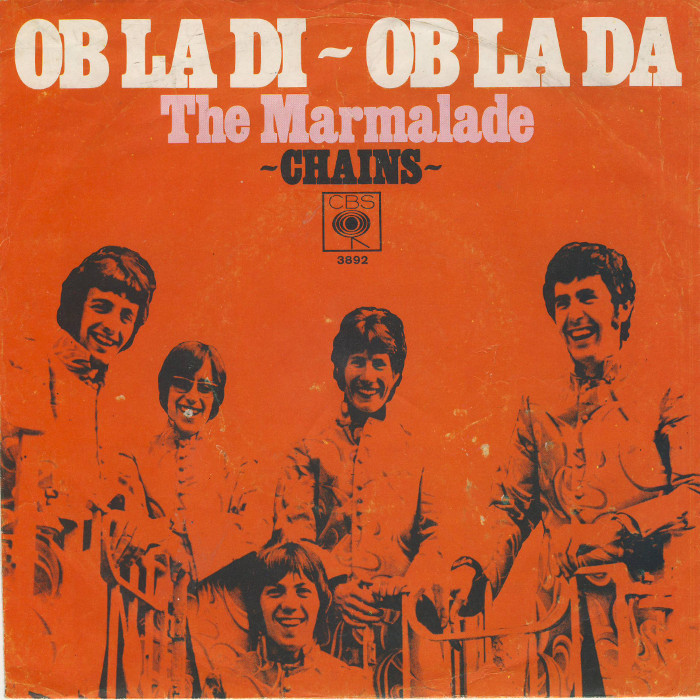 Nonetheless, 'Ob-La-Da, Ob-La-Da” was released as a single in many countries, topping the charts in Japan, Austria, Switzerland and Australia. Both George and John vetoed it being released as a single in either Britain or America because of their distaste for the song, although the group The Marmalade quickly charted their version of the song in the UK (reaching #1) while Floyd Cramer quickly released an instrumental version of the song in the US. All of this, no doubt, contributed to it becoming the most popular song on the “White Album” at the time of its release. Nonetheless, 'Ob-La-Da, Ob-La-Da” was released as a single in many countries, topping the charts in Japan, Austria, Switzerland and Australia. Both George and John vetoed it being released as a single in either Britain or America because of their distaste for the song, although the group The Marmalade quickly charted their version of the song in the UK (reaching #1) while Floyd Cramer quickly released an instrumental version of the song in the US. All of this, no doubt, contributed to it becoming the most popular song on the “White Album” at the time of its release.
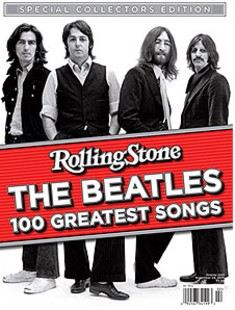 The favorable opinion of “Ob-La-Da, Ob-La-Da” has, unfortunately, waned over the years, the song not even making it onto Rolling Stone's “The Beatles 100 Greatest Songs” 2010 collectors edition. It even made Blender Magazine's 2004 list of “50 Worst Songs Ever!” It's easy to say that this Beatles track falls into one of two categories for most music fans: you either love the song or you hate it! That being said, any way you slice it, the song's writing and recording history makes for a very interesting story. The favorable opinion of “Ob-La-Da, Ob-La-Da” has, unfortunately, waned over the years, the song not even making it onto Rolling Stone's “The Beatles 100 Greatest Songs” 2010 collectors edition. It even made Blender Magazine's 2004 list of “50 Worst Songs Ever!” It's easy to say that this Beatles track falls into one of two categories for most music fans: you either love the song or you hate it! That being said, any way you slice it, the song's writing and recording history makes for a very interesting story.
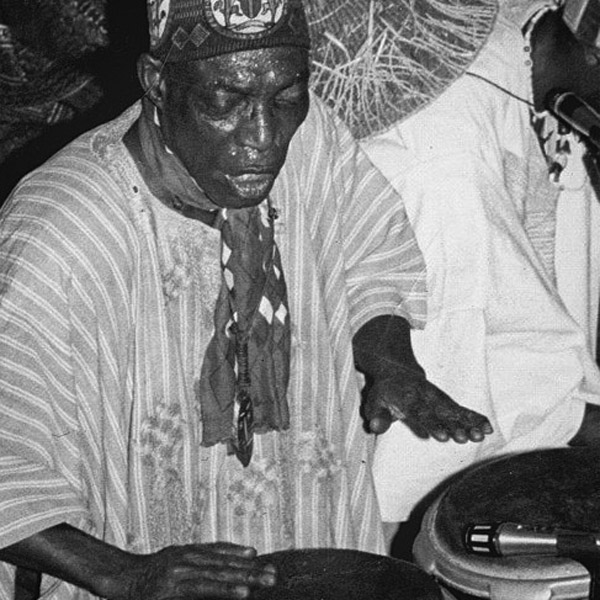
Jimmy Scott
Songwriting History
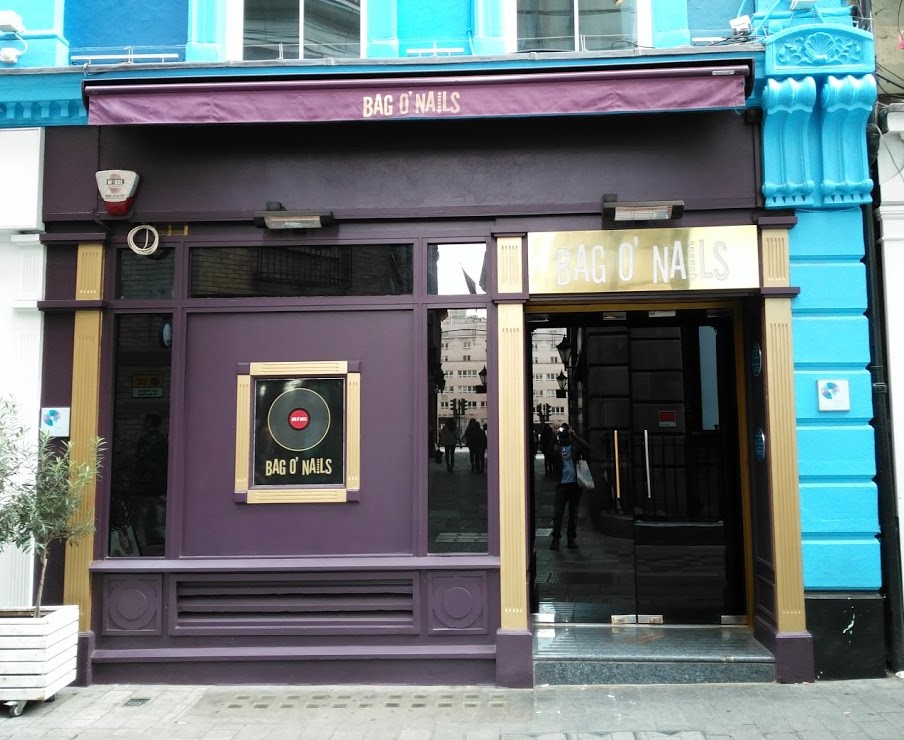 Paul paints a vivid picture of the circumstances of meeting up with a certain friend of his in his book "The Lyrics": "The problem was, our gigs finished so late that all the restaurants and pubs had closed by the time we would get back to London, so the only way we could get a drink and something to eat was to 'go down a club,' as they used to say. That became a way of life. We would drive home from a gig and immediately go to a club. The Bag O'Nails was one of my favorites. The Speakeasy. The Revolution. The Scotch of St. James. The Cromwellian. Later when the other guys were married and living in the suburbs, I would often go by myself. It was in one of these clubs that I met Jimmy Scott, the Nigerian conga player whom I liked a lot." Paul paints a vivid picture of the circumstances of meeting up with a certain friend of his in his book "The Lyrics": "The problem was, our gigs finished so late that all the restaurants and pubs had closed by the time we would get back to London, so the only way we could get a drink and something to eat was to 'go down a club,' as they used to say. That became a way of life. We would drive home from a gig and immediately go to a club. The Bag O'Nails was one of my favorites. The Speakeasy. The Revolution. The Scotch of St. James. The Cromwellian. Later when the other guys were married and living in the suburbs, I would often go by myself. It was in one of these clubs that I met Jimmy Scott, the Nigerian conga player whom I liked a lot."
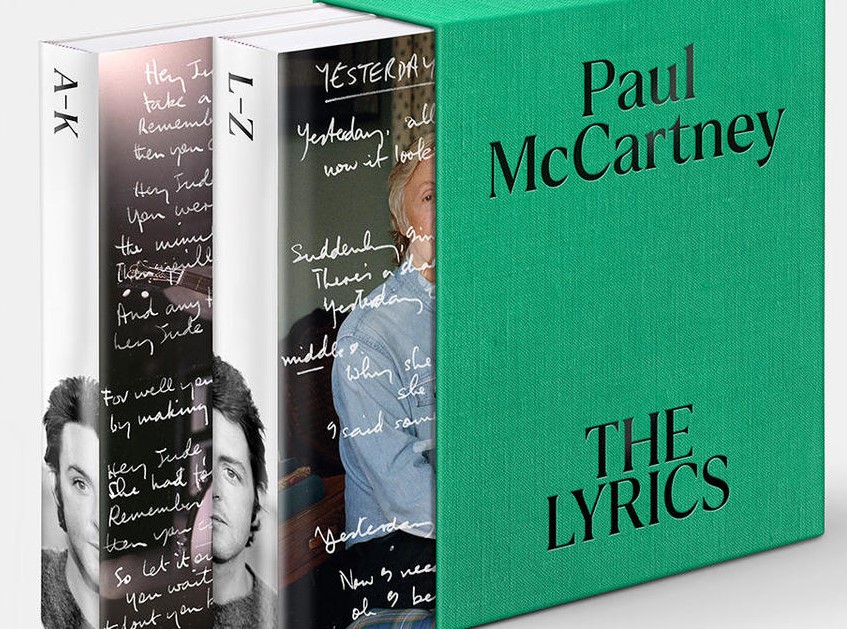 "Jimmy had a couple of catchphrases he used all the time, one of which was 'Ob-La-Di, Ob-La-Da, life goes on, bra.' Some people think 'Ob-La-Di, Ob-La-Da' is a Yoruba phrase that means something like comme ci, comm ca. Some people think it's a phrase Jimmy Scott made up. And there are others who think 'bra' refers to a brassiere, rather than an African version of 'bro.'" In his book "Many Years From Now," Paul adds: "I used to love this expression. Every time we met he'd say, 'Ob la di ob la da, life goes on, bra.' Or somebody would say 'Too much' and he'd say 'Nothing's too much, just outta sight'...He was just one of those guys who had great expressions, you know." In "The Lyrics," Paul continues, "I liked the comme ci, comme ca, que sera sera sentiment. So I set out to write a humorous little 'character song' about Desmond and Molly and their kids. It's a combination of African and Jamaican elements." "Jimmy had a couple of catchphrases he used all the time, one of which was 'Ob-La-Di, Ob-La-Da, life goes on, bra.' Some people think 'Ob-La-Di, Ob-La-Da' is a Yoruba phrase that means something like comme ci, comm ca. Some people think it's a phrase Jimmy Scott made up. And there are others who think 'bra' refers to a brassiere, rather than an African version of 'bro.'" In his book "Many Years From Now," Paul adds: "I used to love this expression. Every time we met he'd say, 'Ob la di ob la da, life goes on, bra.' Or somebody would say 'Too much' and he'd say 'Nothing's too much, just outta sight'...He was just one of those guys who had great expressions, you know." In "The Lyrics," Paul continues, "I liked the comme ci, comme ca, que sera sera sentiment. So I set out to write a humorous little 'character song' about Desmond and Molly and their kids. It's a combination of African and Jamaican elements."
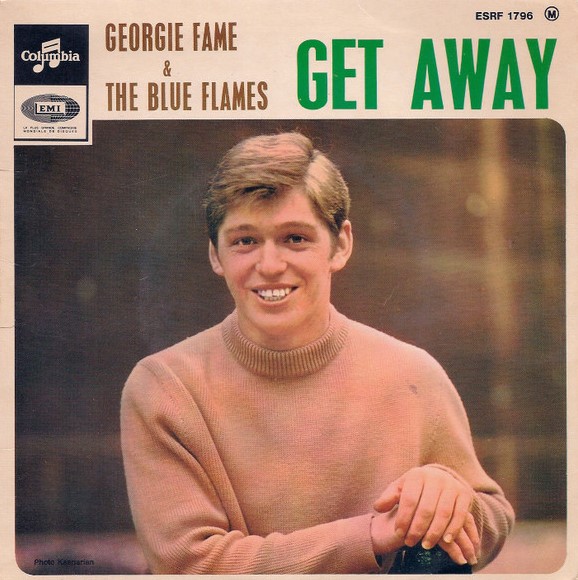 In actuality, Jimmy Scott's full name was Jimmy Anonmuogharan Scott Emuakpor, who was born in Sapele, Nigeria and moved to England in the '50s, playing in many bands (such as Georgie Fame and The Blue Flames) and with various musicians (such as backing Stevie Wonder on his British 1965 tour). Paul reportedly first met Jimmy at the Bag O'Nails club in Soho, London. “He was a great friend of mine,” Paul stated in 1986, adding: “In the '60s we used to meet in a lot of clubs and spent many a happy hour chatting until closing time. He had a great positive attitude to life and was a pleasure to work with.” In actuality, Jimmy Scott's full name was Jimmy Anonmuogharan Scott Emuakpor, who was born in Sapele, Nigeria and moved to England in the '50s, playing in many bands (such as Georgie Fame and The Blue Flames) and with various musicians (such as backing Stevie Wonder on his British 1965 tour). Paul reportedly first met Jimmy at the Bag O'Nails club in Soho, London. “He was a great friend of mine,” Paul stated in 1986, adding: “In the '60s we used to meet in a lot of clubs and spent many a happy hour chatting until closing time. He had a great positive attitude to life and was a pleasure to work with.”
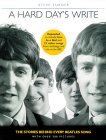 However, there seemed to be a little bit of contention regarding The Beatles' use of his phrase in one of their songs. Paul relates: “I said to him, 'I really like that expression and I'm thinking of using it.'...and he got annoyed when I did a song of it 'cause he wanted a cut. I said, 'Come on, Jimmy, it's just an expression. If you'd written the song, you could have had a cut.'...I sent him a check in recognition of that fact later because even though I had written the whole song and he didn't help me, it was his expression.” There may, in fact, be a little more to the story about settling the issue. Steve Turner's book “A Hard Day's Write” explains: “Around this time (1969, Jimmy) was arrested and taken to Brixton prison to await trial on a charge of failing to pay maintenance to his ex-wife. He asked the police to contact the Beatles' office to see if Paul would foot his huge outstanding legal bill. This Paul did, on condition that Scott dropped his case against him over the song.” However, there seemed to be a little bit of contention regarding The Beatles' use of his phrase in one of their songs. Paul relates: “I said to him, 'I really like that expression and I'm thinking of using it.'...and he got annoyed when I did a song of it 'cause he wanted a cut. I said, 'Come on, Jimmy, it's just an expression. If you'd written the song, you could have had a cut.'...I sent him a check in recognition of that fact later because even though I had written the whole song and he didn't help me, it was his expression.” There may, in fact, be a little more to the story about settling the issue. Steve Turner's book “A Hard Day's Write” explains: “Around this time (1969, Jimmy) was arrested and taken to Brixton prison to await trial on a charge of failing to pay maintenance to his ex-wife. He asked the police to contact the Beatles' office to see if Paul would foot his huge outstanding legal bill. This Paul did, on condition that Scott dropped his case against him over the song.”
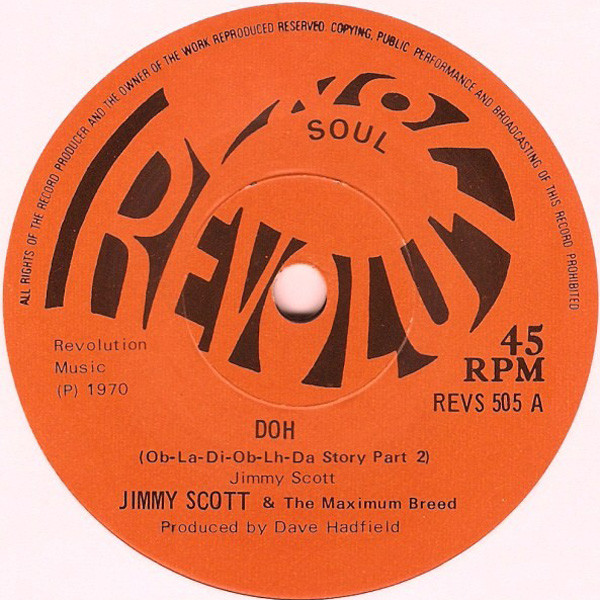 Jimmy Scott continued a career in music, being a supposed uncredited musician on The Rolling Stones 1968 album “Beggars Banquet” as well as working with touring bands such as Bad Manners, his own "Ob-La-Di Ob-La-Da" Band and Jimmy Scott & The Maximum Breed, who released a single titled "Doh (Ob-La-Di-Ob-La Da Story Part 2) in 1970. He also gave African music and drumming workshops in east London in the '70s in association with the Pyramid Arts project. Tragically, in 1986, he caught pneumonia while on an American tour with the group Bad Manners. Fellow band member Doug Trendle explains: “When he got back to Britain he was strip-searched at the airport because he was Nigerian. They left him naked for two hours. The next day he was taken into hospital and he died. Nobody is too sure how old he was because he lied about his age when he got his first British passport. He was supposed to be around 64.” Jimmy Scott continued a career in music, being a supposed uncredited musician on The Rolling Stones 1968 album “Beggars Banquet” as well as working with touring bands such as Bad Manners, his own "Ob-La-Di Ob-La-Da" Band and Jimmy Scott & The Maximum Breed, who released a single titled "Doh (Ob-La-Di-Ob-La Da Story Part 2) in 1970. He also gave African music and drumming workshops in east London in the '70s in association with the Pyramid Arts project. Tragically, in 1986, he caught pneumonia while on an American tour with the group Bad Manners. Fellow band member Doug Trendle explains: “When he got back to Britain he was strip-searched at the airport because he was Nigerian. They left him naked for two hours. The next day he was taken into hospital and he died. Nobody is too sure how old he was because he lied about his age when he got his first British passport. He was supposed to be around 64.”
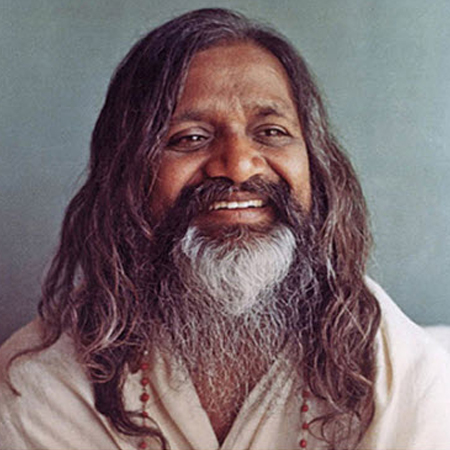 With Jimmy's expression in mind, Paul began forming a song while The Beatles were in India in the spring of 1968. Paul remembers the setting in India when the song started to take shape: “We went down to the village one evening when they were showing a film; the traveling cinema came around with a lorry and put up a screen. It was a very pleasant Indian evening so the Maharishi came...We all walked down as a procession. And it was very, very pleasant; walking along in the dust slightly downhill through a path in the jungle from the meditation camp with my guitar and singing 'Ob-La-Di, Ob-La Da,' which I was writing, accompanying the procession on the way. Of course (the song) has got no connection with meditation except 'Life goes on...', it's a little story about Desmond and Molly. In actual fact, I think they quite enjoyed it, Maharishi quite liked someone strolling along singing." With Jimmy's expression in mind, Paul began forming a song while The Beatles were in India in the spring of 1968. Paul remembers the setting in India when the song started to take shape: “We went down to the village one evening when they were showing a film; the traveling cinema came around with a lorry and put up a screen. It was a very pleasant Indian evening so the Maharishi came...We all walked down as a procession. And it was very, very pleasant; walking along in the dust slightly downhill through a path in the jungle from the meditation camp with my guitar and singing 'Ob-La-Di, Ob-La Da,' which I was writing, accompanying the procession on the way. Of course (the song) has got no connection with meditation except 'Life goes on...', it's a little story about Desmond and Molly. In actual fact, I think they quite enjoyed it, Maharishi quite liked someone strolling along singing."
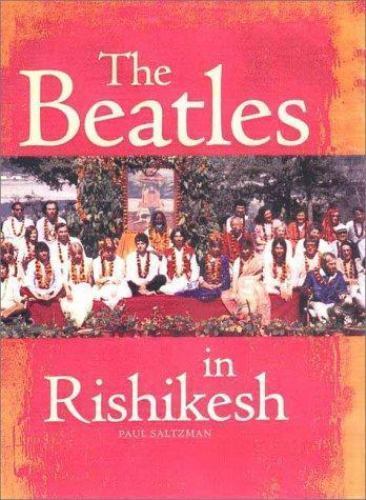 Also in atendance in India at that time was Paul Salzman who, in his book "The Beatles in Rishikesh," relates how Paul and John would play the song's chorus repeatedly at the Maharishi's ashram, Paul having not written any verses for the song as of yet. "They were sitting together and I took a bunch of pictures," remembered photographer Paul Salzman. "I noticed under Paul's toe he was holding a little piece of paper and I looked at the scrap. It had 'Ob-la-di, Ob-la-da' scrawled on it and he was reading the words. He and John sang it over and over again with tremendous joy." Also in atendance in India at that time was Paul Salzman who, in his book "The Beatles in Rishikesh," relates how Paul and John would play the song's chorus repeatedly at the Maharishi's ashram, Paul having not written any verses for the song as of yet. "They were sitting together and I took a bunch of pictures," remembered photographer Paul Salzman. "I noticed under Paul's toe he was holding a little piece of paper and I looked at the scrap. It had 'Ob-la-di, Ob-la-da' scrawled on it and he was reading the words. He and John sang it over and over again with tremendous joy."
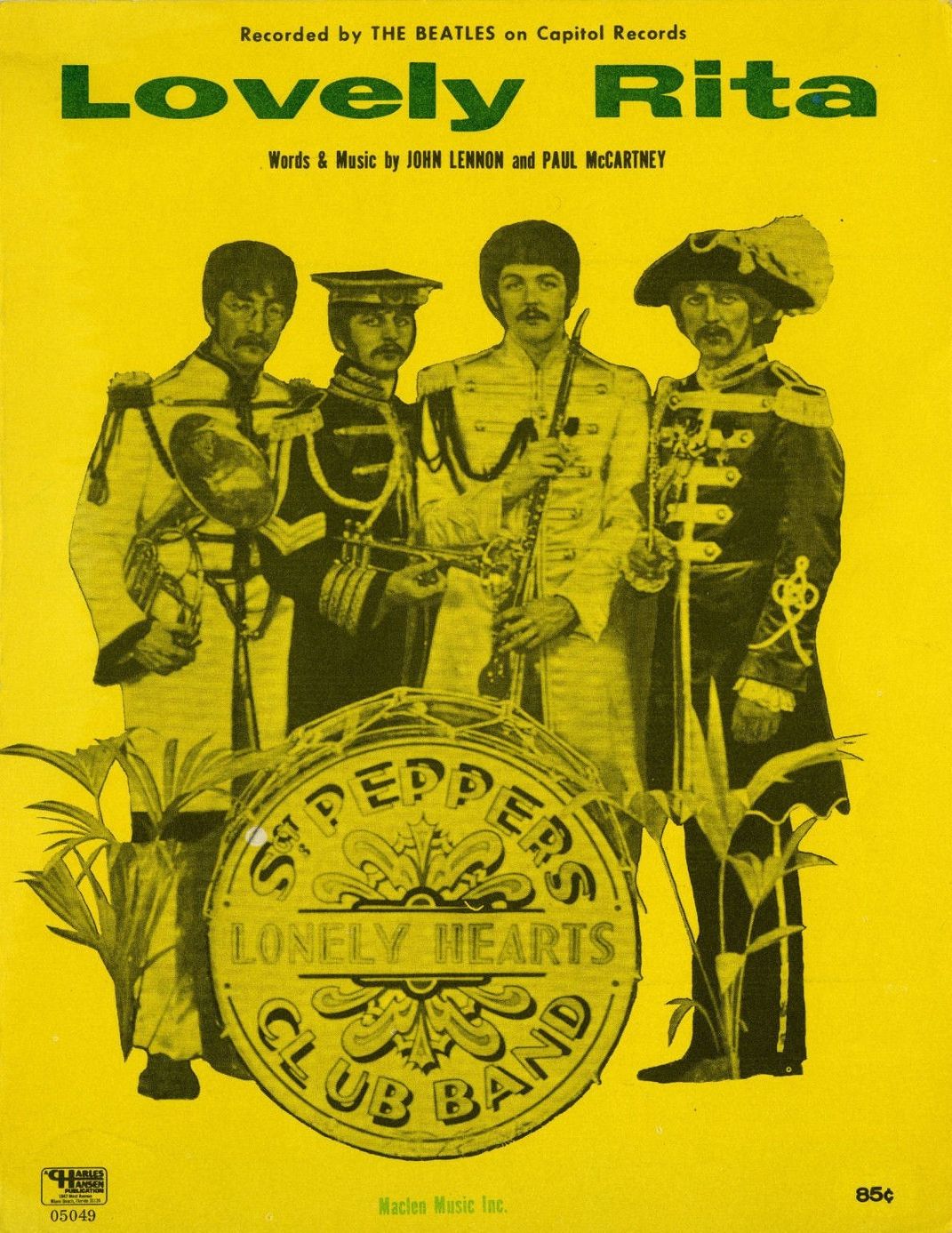 As to the story line he concocted for the song, Paul relates: “It's a very me song, in as much as it's a fantasy about a couple of people who don't really exist, Desmond and Molly. I'm keen on names too. Desmond is a very Caribbean name. It could have been Winston, that would have been all right.” Writing about fictional characters had become a usual practice for McCartney, “Eleanor Rigby” and “Lovely Rita” being some recent examples. This kind of writing was something more foreign to his bandmates however. Relating a conversation with George Harrison, Paul remembers: “He was saying that he didn't write songs the way I did...he said, 'I don't know how you write this ob-la-di, ob-la-da, Molly and Desmond; do you really know these people?' I said, 'No, I just make them up, like a novelist makes characters up.'" As to the story line he concocted for the song, Paul relates: “It's a very me song, in as much as it's a fantasy about a couple of people who don't really exist, Desmond and Molly. I'm keen on names too. Desmond is a very Caribbean name. It could have been Winston, that would have been all right.” Writing about fictional characters had become a usual practice for McCartney, “Eleanor Rigby” and “Lovely Rita” being some recent examples. This kind of writing was something more foreign to his bandmates however. Relating a conversation with George Harrison, Paul remembers: “He was saying that he didn't write songs the way I did...he said, 'I don't know how you write this ob-la-di, ob-la-da, Molly and Desmond; do you really know these people?' I said, 'No, I just make them up, like a novelist makes characters up.'"
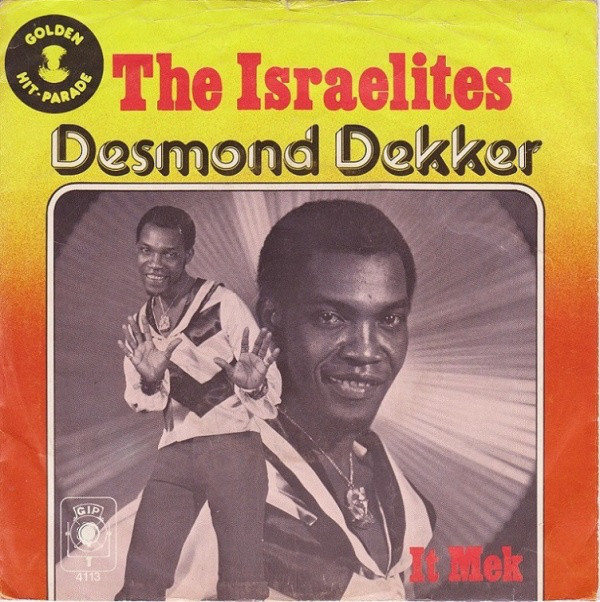 Paul analyzes the song's lyrics much deeper in his book "The Lyrics" "I'm pretty sure Desmond is named after Desmond Dekker, the Jamaican ska and reggae artist whose 'Israelites' was a hit later in 1969. He'd already had a big hit in the UK in 1967 with '007 (Shanty Town)' (#14 in the UK). When Desmond takes a 'trolley,' I may be thinking of the San Francisco tram system. San Francisco is where The Beatles had done our last concert. There's a world of difference between 'Desmond takes a tram' and 'Desmond takes a trolley.' Some things either fit rhythmically or they don't, and 'tram' is awkward in a song, whereas 'trolley' allows for more possibilities rhythmically. John and I used to have conversations about trying to write songs that had a very conversational tone. 'Desmond takes a trolly to the jeweller's store' isn't too flowery. It's something you could actually hear people saying." Paul analyzes the song's lyrics much deeper in his book "The Lyrics" "I'm pretty sure Desmond is named after Desmond Dekker, the Jamaican ska and reggae artist whose 'Israelites' was a hit later in 1969. He'd already had a big hit in the UK in 1967 with '007 (Shanty Town)' (#14 in the UK). When Desmond takes a 'trolley,' I may be thinking of the San Francisco tram system. San Francisco is where The Beatles had done our last concert. There's a world of difference between 'Desmond takes a tram' and 'Desmond takes a trolley.' Some things either fit rhythmically or they don't, and 'tram' is awkward in a song, whereas 'trolley' allows for more possibilities rhythmically. John and I used to have conversations about trying to write songs that had a very conversational tone. 'Desmond takes a trolly to the jeweller's store' isn't too flowery. It's something you could actually hear people saying."
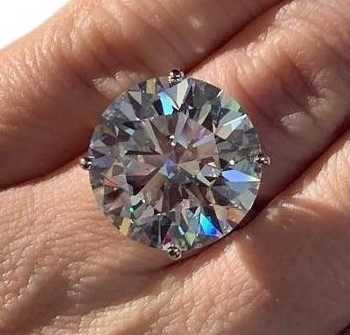 "That could be a secret of why The Beatles stuff is still very accessible to people," Paul continues. "It's because we're just talking straight. No matter how straight you're talking, though, there's still room for interpretation. Going back to the word 'trolley,' I can see there's actually a lot to be said for the 'shopping cart' reading. The idea of going to 'a jeweller's store' with a shopping cart to load up on stuff is pretty funny, particularly when Desmond comes back with a 'twenty carat' engagement ring. One way or another, it's pretty everyday stuff...I love simple truths. I love that the vast majority of people, whether they're Mongolian or Indian or American, relate immediately to the idea of family and family life, to the image of 'a couple of kids running in the yard.' If I plug into that, I'm going to relate to people." "That could be a secret of why The Beatles stuff is still very accessible to people," Paul continues. "It's because we're just talking straight. No matter how straight you're talking, though, there's still room for interpretation. Going back to the word 'trolley,' I can see there's actually a lot to be said for the 'shopping cart' reading. The idea of going to 'a jeweller's store' with a shopping cart to load up on stuff is pretty funny, particularly when Desmond comes back with a 'twenty carat' engagement ring. One way or another, it's pretty everyday stuff...I love simple truths. I love that the vast majority of people, whether they're Mongolian or Indian or American, relate immediately to the idea of family and family life, to the image of 'a couple of kids running in the yard.' If I plug into that, I'm going to relate to people."
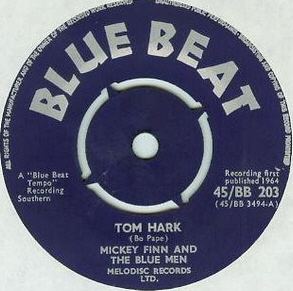 As for the rhythmic feel of the song, The Beatles were trying their best to capture the groove heard on imported "ska" records they were familiar with hearing in the mid '60s. This early forerunner of reggae music, also referred to as "blue beat" because of this being the name of the record label on which many of these songs were released, was heard a lot in UK nightclubs during that time. In 1980, John confesses that the first time that they made "a deliberate and conscious attempt at ska (was) in the middle, the solo on 'I Call Your Name.' 'Ob-La-Di' was semi-semi (ska)." As for the rhythmic feel of the song, The Beatles were trying their best to capture the groove heard on imported "ska" records they were familiar with hearing in the mid '60s. This early forerunner of reggae music, also referred to as "blue beat" because of this being the name of the record label on which many of these songs were released, was heard a lot in UK nightclubs during that time. In 1980, John confesses that the first time that they made "a deliberate and conscious attempt at ska (was) in the middle, the solo on 'I Call Your Name.' 'Ob-La-Di' was semi-semi (ska)."
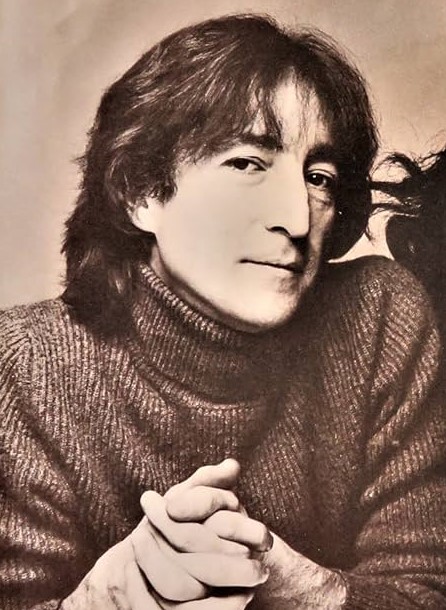 Other than Jimmy Scott's inadvertent collaboration on the song, Lennon's input was very little at best. Paul, as stated above, maintains “I had written the whole song,” while John, in 1980 stated: "I might have given him a couple of lyrics, but it's his song, his lyric." By looking at Paul's handwritten lyric sheet, we can see some last minute changes were made in the studio, such as "Desi says to Molly" instead of "Desmond" in the first verse, and "In the evening she still sings this with the band" in the third verse, indicating the catchy chorus as what Molly sings "with the band" after she "does her pretty face." Other than Jimmy Scott's inadvertent collaboration on the song, Lennon's input was very little at best. Paul, as stated above, maintains “I had written the whole song,” while John, in 1980 stated: "I might have given him a couple of lyrics, but it's his song, his lyric." By looking at Paul's handwritten lyric sheet, we can see some last minute changes were made in the studio, such as "Desi says to Molly" instead of "Desmond" in the first verse, and "In the evening she still sings this with the band" in the third verse, indicating the catchy chorus as what Molly sings "with the band" after she "does her pretty face."
Recording History
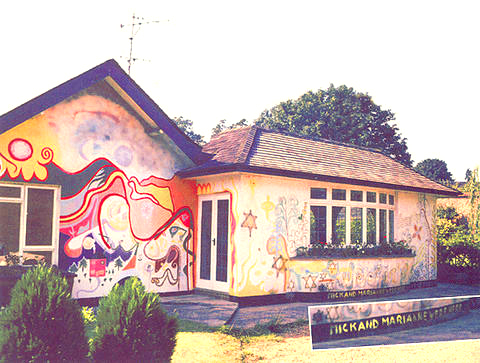 On May 29th, 1968, as on the previous day, The Beatles met at 'Kinfauns,' George's home in Esher, Surrey, to record demos for all the songs they had recently written in preparation for going into EMI studios the following day to officially start recording their next album. On this second day at 'Kinfauns,” Paul recorded a very charming acoustic guitar rendition of “Ob-La-Di, Ob-La-Da,” overdubbing himself on guitar and vocals as well as beating on what sounds like bongos (but what very likely may have been the back of his acoustic guitar). Also heard on this demo are both tambourine and maracas played by other Beatles, as well as John's voice being heard at the beginning saying "Molly" after Paul says "Desmond." Paul convincingly demonstrates the Jamaican-flavored imagery he envisioned for the song, complete with vocal “chick-a-boom, chick-a-boom...” expressions in the bridges of the song. The primitive recording made on this day easily gets out of sync during double-tracking at times, but nonetheless shows the enduring quality of the song. On May 29th, 1968, as on the previous day, The Beatles met at 'Kinfauns,' George's home in Esher, Surrey, to record demos for all the songs they had recently written in preparation for going into EMI studios the following day to officially start recording their next album. On this second day at 'Kinfauns,” Paul recorded a very charming acoustic guitar rendition of “Ob-La-Di, Ob-La-Da,” overdubbing himself on guitar and vocals as well as beating on what sounds like bongos (but what very likely may have been the back of his acoustic guitar). Also heard on this demo are both tambourine and maracas played by other Beatles, as well as John's voice being heard at the beginning saying "Molly" after Paul says "Desmond." Paul convincingly demonstrates the Jamaican-flavored imagery he envisioned for the song, complete with vocal “chick-a-boom, chick-a-boom...” expressions in the bridges of the song. The primitive recording made on this day easily gets out of sync during double-tracking at times, but nonetheless shows the enduring quality of the song.
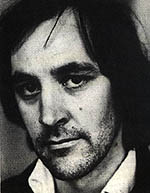 The Beatles didn't bring the song into EMI Studios until a little over a month later, on July 3rd, 1968, arriving around 8 pm in Studio Two. Although documentation shows George Martin to be present on this day as producer, Geoff Emerick remembers otherwise: “George happened to be absent on the first night The Beatles started running down 'Ob-La-Di, Ob-La-Da,' so Chris (Thomas) was the de facto producer. Initially, we all enjoyed doing the track because of its lighthearted up-tempo feel.” The Beatles didn't bring the song into EMI Studios until a little over a month later, on July 3rd, 1968, arriving around 8 pm in Studio Two. Although documentation shows George Martin to be present on this day as producer, Geoff Emerick remembers otherwise: “George happened to be absent on the first night The Beatles started running down 'Ob-La-Di, Ob-La-Da,' so Chris (Thomas) was the de facto producer. Initially, we all enjoyed doing the track because of its lighthearted up-tempo feel.”
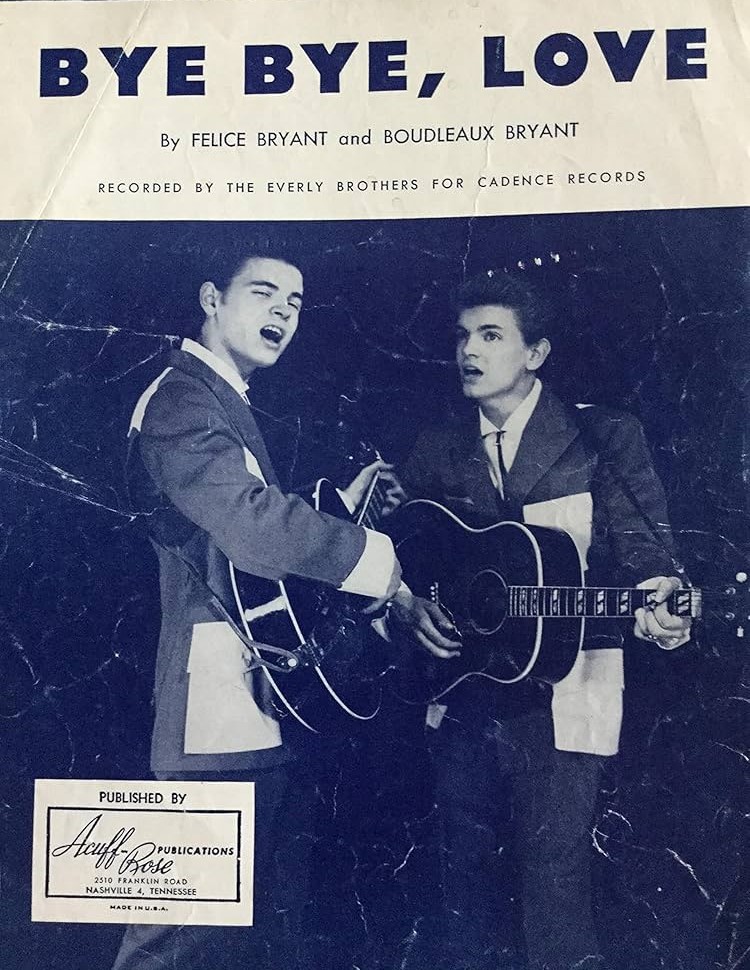 With all four Beatles present, they worked at laying down a proper rhythm track for the song. The instrumentation appears to have been Paul on acoustic guitar while singing lead vocals off microphone as a guide vocal, George and John also on acoustic guitars, and Ringo on drums. In between takes, George annouced, "I'm standing up this time," then adding, in reference to a Duane Eddy instrumental hit, "I'm 'Movin' 'n' Groovin''!" With acoustic guitars in hand, they couldn't help but be inspired to touch on an early Everly Brothers' hit "Bye Bye Love" sometime in the session as well. Seven takes were recorded, the seventh take being considered 'best' at first, upon which Paul overdubbed his lead vocals and then a second acoustic guitar. Paul then reconsidered his choice of "take seven," thinking "take three" was best after all. Onto this take, Paul overdubbed a second acoustic guitar, abandoning "take seven" forever. Since the hour had reached 3:15 am the following day, Paul decided to leave off recording his lead vocals until the next session. With all four Beatles present, they worked at laying down a proper rhythm track for the song. The instrumentation appears to have been Paul on acoustic guitar while singing lead vocals off microphone as a guide vocal, George and John also on acoustic guitars, and Ringo on drums. In between takes, George annouced, "I'm standing up this time," then adding, in reference to a Duane Eddy instrumental hit, "I'm 'Movin' 'n' Groovin''!" With acoustic guitars in hand, they couldn't help but be inspired to touch on an early Everly Brothers' hit "Bye Bye Love" sometime in the session as well. Seven takes were recorded, the seventh take being considered 'best' at first, upon which Paul overdubbed his lead vocals and then a second acoustic guitar. Paul then reconsidered his choice of "take seven," thinking "take three" was best after all. Onto this take, Paul overdubbed a second acoustic guitar, abandoning "take seven" forever. Since the hour had reached 3:15 am the following day, Paul decided to leave off recording his lead vocals until the next session.
 Later that day, July 4th, 1968, The Beatles re-entered EMI Studio Two for more overdubs on the song. The session was said to have started at 7 pm but, given that not much was actually done on this day, it's more likely that they arrived later. First on the agenda was for Paul to record his lead vocals onto the previous day's "take three," complete with his vocalized "chick-a-boom, chick-a-boom" percussion as he had included in the Esher demo. John and George then recorded their “la-la” backing vocals on the last open track, the three of them adding some percussion along the way, since maracas and a cowbell are heard on the recording. “Even Lennon got into it – at first, anyway,” Geoff Emerick explains, “because it gave him a chance to clown around with his silly voices.” Since the four-track tape was now full, a reduction mix was made to open up new tracks, allowing Paul to double-track his lead vocals onto what was now considered "take five." At the completion of the tape, George Martin's voice is heard from the control room saying, "Perfect up to the very last bit." This version of the song eventually was released on the 2018 "'White Album' 50th Anniversary Super Deluxe" box set. By 2:15 am the following morning, the session was complete. Later that day, July 4th, 1968, The Beatles re-entered EMI Studio Two for more overdubs on the song. The session was said to have started at 7 pm but, given that not much was actually done on this day, it's more likely that they arrived later. First on the agenda was for Paul to record his lead vocals onto the previous day's "take three," complete with his vocalized "chick-a-boom, chick-a-boom" percussion as he had included in the Esher demo. John and George then recorded their “la-la” backing vocals on the last open track, the three of them adding some percussion along the way, since maracas and a cowbell are heard on the recording. “Even Lennon got into it – at first, anyway,” Geoff Emerick explains, “because it gave him a chance to clown around with his silly voices.” Since the four-track tape was now full, a reduction mix was made to open up new tracks, allowing Paul to double-track his lead vocals onto what was now considered "take five." At the completion of the tape, George Martin's voice is heard from the control room saying, "Perfect up to the very last bit." This version of the song eventually was released on the 2018 "'White Album' 50th Anniversary Super Deluxe" box set. By 2:15 am the following morning, the session was complete.
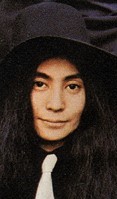 More overdubs were recorded on the following day, July 5th, 1968, once again at EMI Studio Two. The overdubs this time, however, were not performed by The Beatles but by session musicians brought in at the request of Paul, playing a score worked out by Paul and transcribed by George Martin. The session was scheduled to begin at 5 pm but the bulk of the overdubs were recorded between 6 and 10:30 pm. Three saxophonists, James Gray, Rex Morris and Cyril Reuben, recorded their parts as well as none other than Jimmy Scott (the same person who coined the “Ob-la-di...” phrase) on bongos, no doubt as a concession from Paul for his inspiration to the song. Rex Morris, acknowledging his performance on “Ob-La-Da, Ob-La-Da” as “the reggae one,” remembers: "Yoko Ono was there at the session.” More overdubs were recorded on the following day, July 5th, 1968, once again at EMI Studio Two. The overdubs this time, however, were not performed by The Beatles but by session musicians brought in at the request of Paul, playing a score worked out by Paul and transcribed by George Martin. The session was scheduled to begin at 5 pm but the bulk of the overdubs were recorded between 6 and 10:30 pm. Three saxophonists, James Gray, Rex Morris and Cyril Reuben, recorded their parts as well as none other than Jimmy Scott (the same person who coined the “Ob-la-di...” phrase) on bongos, no doubt as a concession from Paul for his inspiration to the song. Rex Morris, acknowledging his performance on “Ob-La-Da, Ob-La-Da” as “the reggae one,” remembers: "Yoko Ono was there at the session.”
Then, between 10:30 and 11:45 pm, a piccolo overdub was performed. (Documents do not reveal the identity of this musician, although it may have been one of the above mentioned saxophonists.) It appears that Paul decided that this piccolo part was not suitable for the song, so he instead recorded another guitar overdub on the same track as the piccolo, recording over this musician's performance.
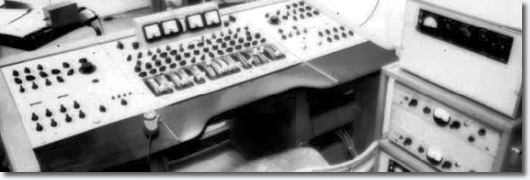 Chris Thomas, who was also present at this session, recalls the uniqueness of this guitar overdub: “Paul was deliberately overloading the sound through the desk so that it sounded like a bass.” Paul remembers some technical details about this overdub: “You can defeat the machine. For example, one trick of ours – 'Ob-La-Di' is one of the songs I did this on – was to over-record an acoustic guitar, so you'd swing the needle into the red and it'd be there, hard, every time you'd played it. The engineer would say 'No, no, no this is not allowed, we have to keep it just before the red or a little into the red!' and we'd be firm and say 'No.' And the acoustic would come back like an electric, it wouldn't distort too much, it would just mess around with that original sound. It'd make it hot. You'd defeated the machine, you'd actually screwed it up a bit. They're harder than ever to defeat now. They've thought of all that. If you're going to work in the red now there's a little computer that comes in and says 'Limit!,' stops it and brings it back. They're all so clever these days and you can't actually screw up.” Chris Thomas, who was also present at this session, recalls the uniqueness of this guitar overdub: “Paul was deliberately overloading the sound through the desk so that it sounded like a bass.” Paul remembers some technical details about this overdub: “You can defeat the machine. For example, one trick of ours – 'Ob-La-Di' is one of the songs I did this on – was to over-record an acoustic guitar, so you'd swing the needle into the red and it'd be there, hard, every time you'd played it. The engineer would say 'No, no, no this is not allowed, we have to keep it just before the red or a little into the red!' and we'd be firm and say 'No.' And the acoustic would come back like an electric, it wouldn't distort too much, it would just mess around with that original sound. It'd make it hot. You'd defeated the machine, you'd actually screwed it up a bit. They're harder than ever to defeat now. They've thought of all that. If you're going to work in the red now there's a little computer that comes in and says 'Limit!,' stops it and brings it back. They're all so clever these days and you can't actually screw up.”
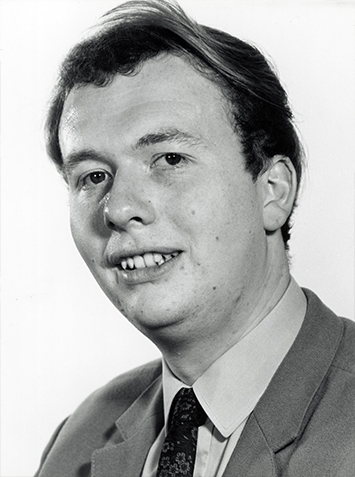 As far as all the effort put into recording “Ob-La-Di, Ob-La-Da,” things started getting somewhat tense in the studio on this day, as explained by Geoff Emerick. “It started going on and on, dragging out over three nights. Paul wasn't happy with the rhythm of the track or with the way his vocal lay. He was after a Jamaican reggae feel and he wasn't satisfied that the band had nailed it. The problem was exacerbated by the fact that even Paul didn't quite know how to lock it in rhythmically, and so he was getting pretty frustrated with himself. Paul was something of a perfectionist by this point, but he also had to think that perhaps that had something to do with why he was so fussy about the recording of the song – maybe he did that just to annoy John, just to teach him a lesson.” As far as all the effort put into recording “Ob-La-Di, Ob-La-Da,” things started getting somewhat tense in the studio on this day, as explained by Geoff Emerick. “It started going on and on, dragging out over three nights. Paul wasn't happy with the rhythm of the track or with the way his vocal lay. He was after a Jamaican reggae feel and he wasn't satisfied that the band had nailed it. The problem was exacerbated by the fact that even Paul didn't quite know how to lock it in rhythmically, and so he was getting pretty frustrated with himself. Paul was something of a perfectionist by this point, but he also had to think that perhaps that had something to do with why he was so fussy about the recording of the song – maybe he did that just to annoy John, just to teach him a lesson.”
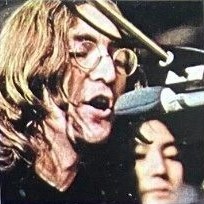 “Throughout the preceding weeks I had noticed that John's behavior was becoming increasingly erratic – his mood swings were more severe, and they were occurring more frequently. That was definitely the case with the recording of (this song). One moment he'd be into it, acting the fool and doing his fake Jamaican patois, the next minute he'd be sulking and grumbling about how the song was more of Paul's 'granny music sh*t.' You never knew exactly where you stood with Lennon at any given time, but things were definitely getting worse.” “Throughout the preceding weeks I had noticed that John's behavior was becoming increasingly erratic – his mood swings were more severe, and they were occurring more frequently. That was definitely the case with the recording of (this song). One moment he'd be into it, acting the fool and doing his fake Jamaican patois, the next minute he'd be sulking and grumbling about how the song was more of Paul's 'granny music sh*t.' You never knew exactly where you stood with Lennon at any given time, but things were definitely getting worse.”
In any event under these strained circumstances, after a short playback of the day's work, this session was complete, everyone gone by 1:30 am the next morning.
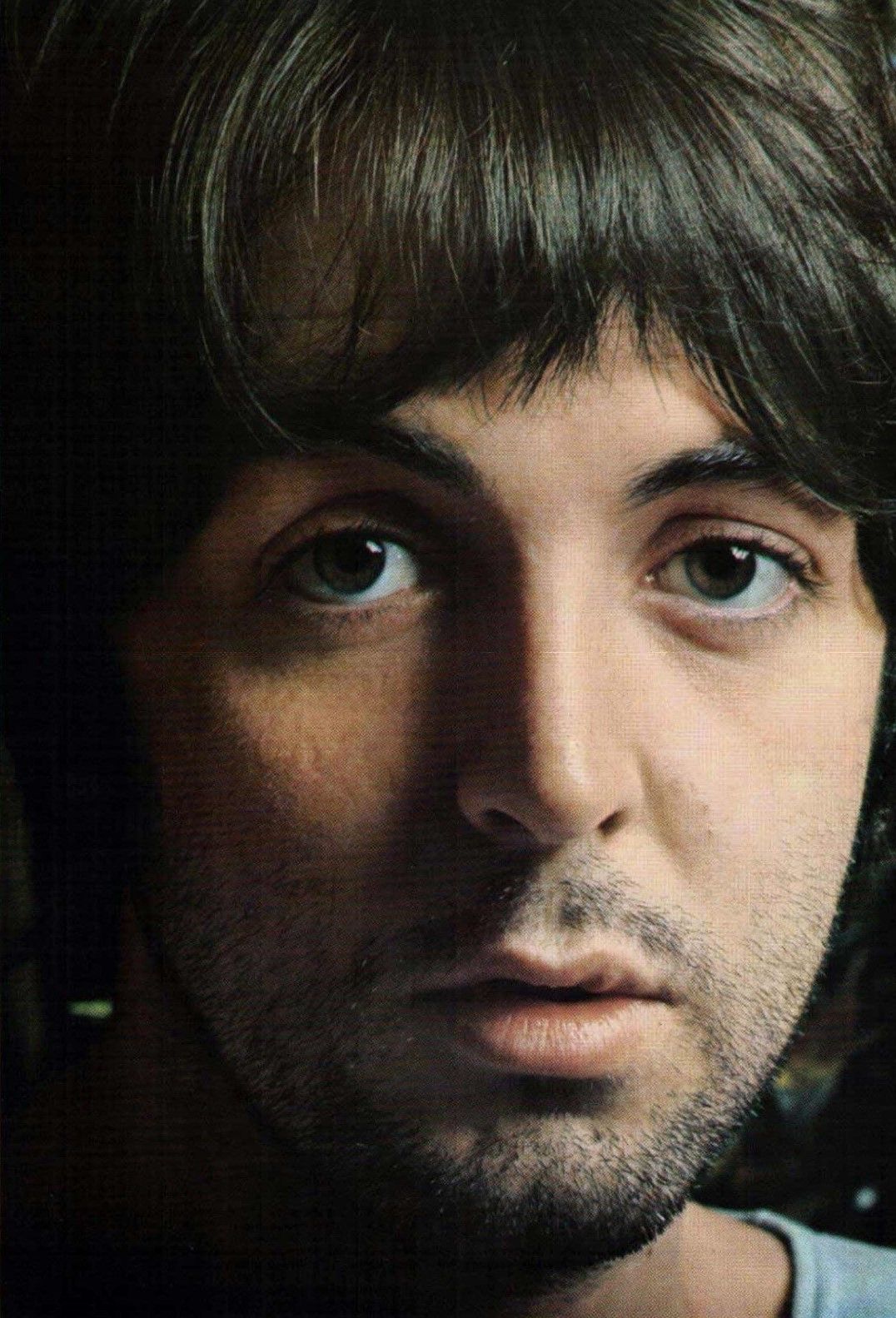 During the next three days, Paul decided that, upon his hearing the rough remix that was given to him at the end of the previous session, that he wanted to start from scratch. This was a first for The Beatles; to have spent the money and taken the time to recruit outside musicians for a particular song and then decide not to use anything they'd contributed. If things were tense in the studio before, they were bound to be unbearable now! During the next three days, Paul decided that, upon his hearing the rough remix that was given to him at the end of the previous session, that he wanted to start from scratch. This was a first for The Beatles; to have spent the money and taken the time to recruit outside musicians for a particular song and then decide not to use anything they'd contributed. If things were tense in the studio before, they were bound to be unbearable now!
 And so it was, on July 8th, 1968, when The Beatles returned to EMI Studio Two at 5 pm (or so) to find out that Paul wanted to begin again on the same song that had been getting on everyone's nerves! “John went ballistic,” Geoff Emerick relates. “Ranting and raving, he headed out the door, with Yoko trailing closely behind, and we thought that we'd seen the last of him that evening. But a few hours later he stormed back into the studio, clearly in a highly altered state of mind.” And so it was, on July 8th, 1968, when The Beatles returned to EMI Studio Two at 5 pm (or so) to find out that Paul wanted to begin again on the same song that had been getting on everyone's nerves! “John went ballistic,” Geoff Emerick relates. “Ranting and raving, he headed out the door, with Yoko trailing closely behind, and we thought that we'd seen the last of him that evening. But a few hours later he stormed back into the studio, clearly in a highly altered state of mind.”
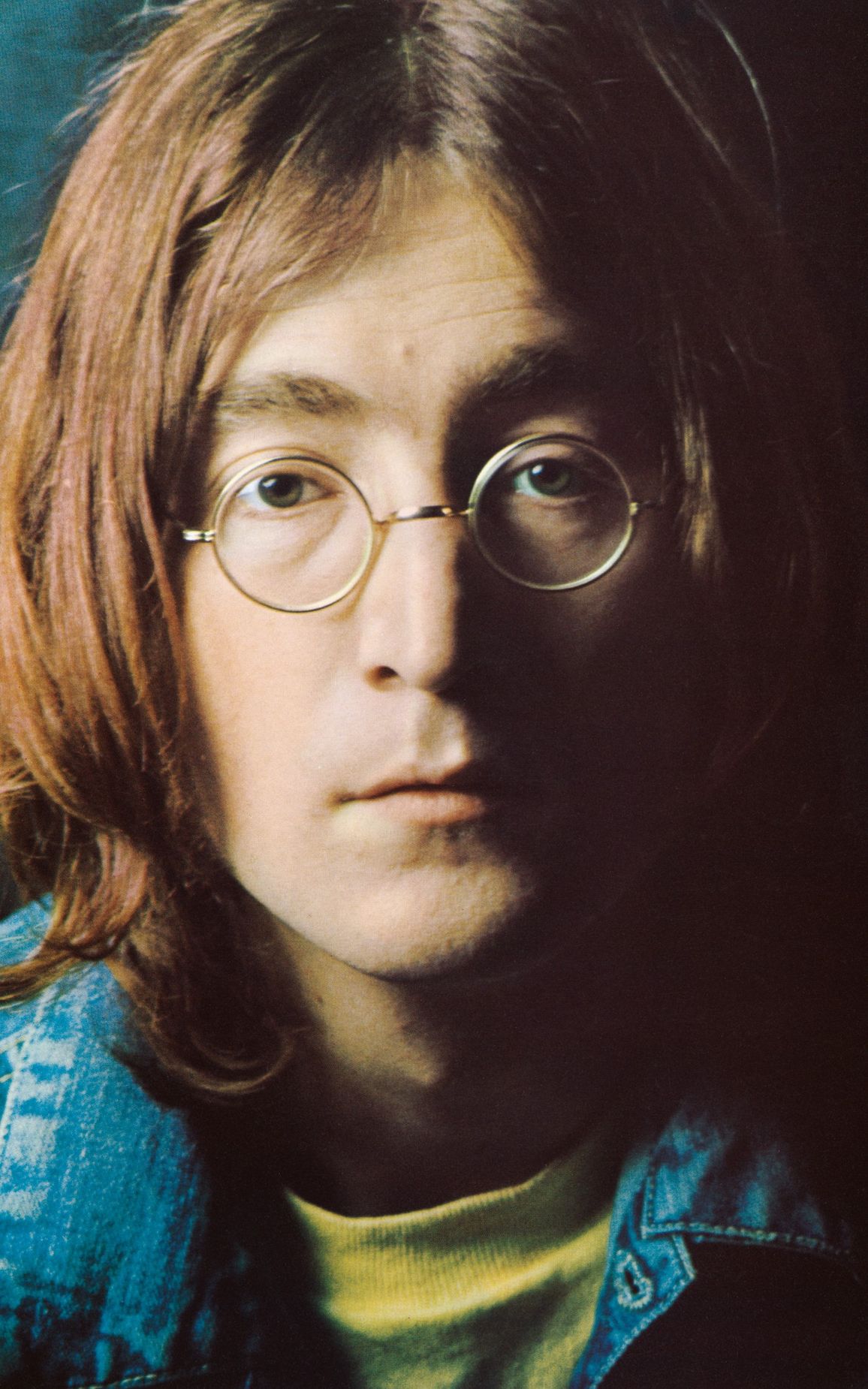 “'I AM F*CKING STONED!!' John Lennon bellowed from the top of the stairs. He had chosen to make his entrance through the upstairs door, presumably so that he could quickly gain the attention of the three startled Beatles below. Swaying slightly, he continued, waving his arms for emphasis. 'I am more stoned than you have ever been. In fact, I am more stoned than you will ever be!'...'And this,' Lennon added with a snarl, 'is how the f*cking song should go.' Unsteadily, he lurched down the stairs and over to the piano and began smashing the keys with all his might, pounding out the famous opening chords that became the song's introduction, played at a breakneck tempo. A very upset Paul got right in Lennon's face. For a moment I thought fists might fly.” “'I AM F*CKING STONED!!' John Lennon bellowed from the top of the stairs. He had chosen to make his entrance through the upstairs door, presumably so that he could quickly gain the attention of the three startled Beatles below. Swaying slightly, he continued, waving his arms for emphasis. 'I am more stoned than you have ever been. In fact, I am more stoned than you will ever be!'...'And this,' Lennon added with a snarl, 'is how the f*cking song should go.' Unsteadily, he lurched down the stairs and over to the piano and began smashing the keys with all his might, pounding out the famous opening chords that became the song's introduction, played at a breakneck tempo. A very upset Paul got right in Lennon's face. For a moment I thought fists might fly.”
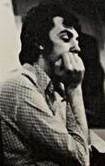 “'Okay, then, John,' he said in short, clipped words, staring his deranged bandmate straight in the eye. 'Let's do it your way.' As angry as he was, I think that deep down inside Paul was flattered that his longtime collaborator had given the song any thought at all...even though he had obviously done so while getting out of his skull.” “'Okay, then, John,' he said in short, clipped words, staring his deranged bandmate straight in the eye. 'Let's do it your way.' As angry as he was, I think that deep down inside Paul was flattered that his longtime collaborator had given the song any thought at all...even though he had obviously done so while getting out of his skull.”
 It's funny how, when two different people witness the same event, they may have completely different takes on what occurred. In his book “Many Years From Now,” Paul describes this development like so: “I remember being in the studio with George and Ringo, struggling with an acoustic version of the song. John was late for the session but when he arrived he bounced in, apologizing, in a very good mood. He sat down at the piano and instantly played the blue-beat-style intro. We were very pleased with his fresh attitude. It turned us on and turned the whole song around. He and I worked hard on the vocals and I remember the two of us in the studio having a whale of a time.” It's funny how, when two different people witness the same event, they may have completely different takes on what occurred. In his book “Many Years From Now,” Paul describes this development like so: “I remember being in the studio with George and Ringo, struggling with an acoustic version of the song. John was late for the session but when he arrived he bounced in, apologizing, in a very good mood. He sat down at the piano and instantly played the blue-beat-style intro. We were very pleased with his fresh attitude. It turned us on and turned the whole song around. He and I worked hard on the vocals and I remember the two of us in the studio having a whale of a time.”
Although both of these eyewitness events sound convincing, the “whale of a time” can be heard when listening to the uncut introduction of this song on a rough mix which was given by Ringo to his friend Peter Sellers, this mix being made available on bootlegs.
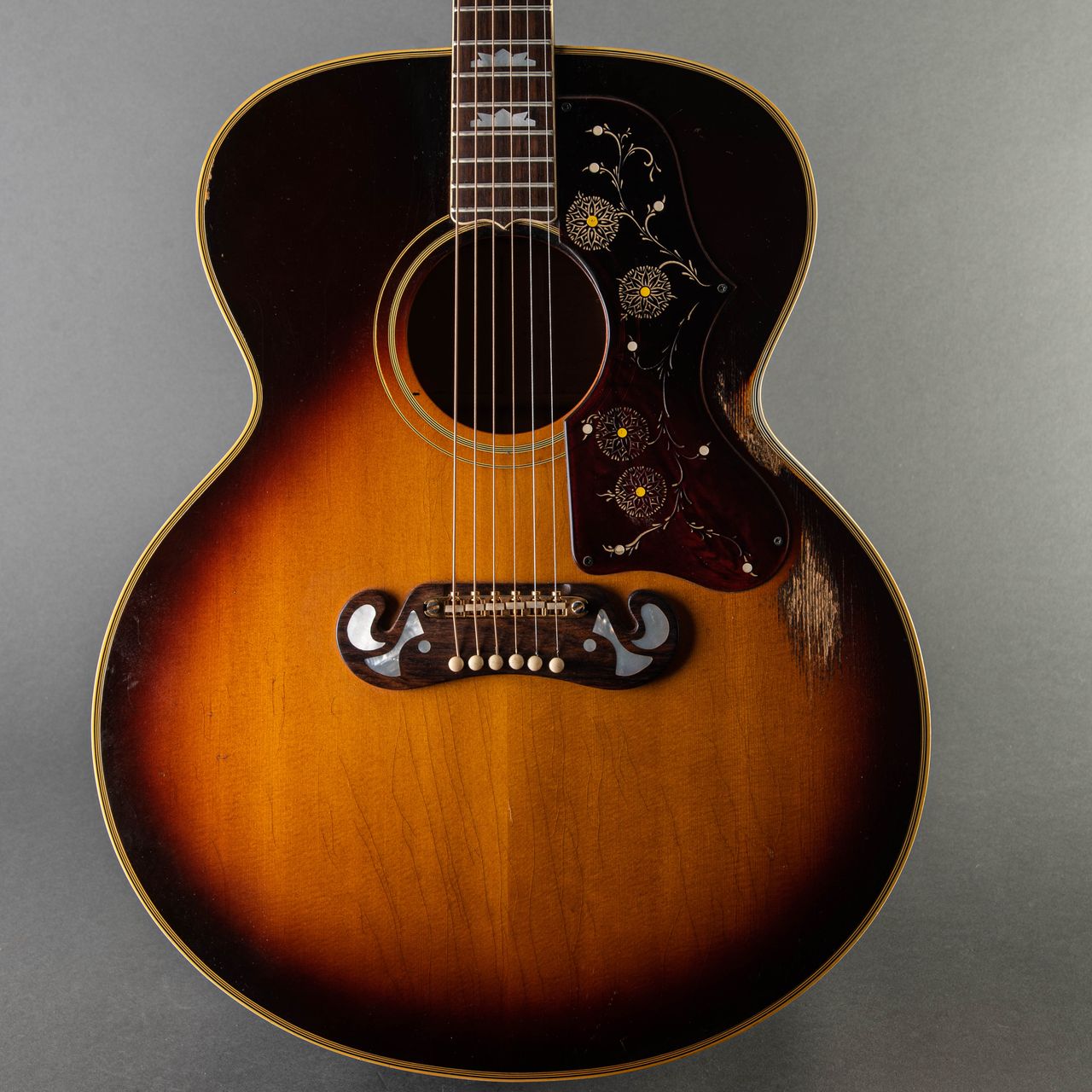 Having established how to proceed with recording this new version of the song, twelve live takes of the rhythm track were recorded on this day with John on piano, Paul on guide vocals and what Mark Lewisohn's book "The Beatles Recording Sessions" refers to as "fuzz bass," George on his Gibson J-200 acoustic guitar and Ringo on drums. One additional element from the original version was the inclusion of the phrase “and if you want some fun” at the conclusion of the song. Having filled all four tracks of the tape with this performance, a tape reduction was made of "take 12," which made it "take 13," this backing track reduced to track one of a new tape. Paul overdubbed lead vocals while John and George overdubbed backing vocals, this taking up tracks three and four of the tape, while 'Latin American percussion' (maracas and other assorted instruments) were added onto track two. The “other assorted instruments” may very well have included the small intricate piano overdubs heard in the last verse, these most likely being played by Paul. Having established how to proceed with recording this new version of the song, twelve live takes of the rhythm track were recorded on this day with John on piano, Paul on guide vocals and what Mark Lewisohn's book "The Beatles Recording Sessions" refers to as "fuzz bass," George on his Gibson J-200 acoustic guitar and Ringo on drums. One additional element from the original version was the inclusion of the phrase “and if you want some fun” at the conclusion of the song. Having filled all four tracks of the tape with this performance, a tape reduction was made of "take 12," which made it "take 13," this backing track reduced to track one of a new tape. Paul overdubbed lead vocals while John and George overdubbed backing vocals, this taking up tracks three and four of the tape, while 'Latin American percussion' (maracas and other assorted instruments) were added onto track two. The “other assorted instruments” may very well have included the small intricate piano overdubs heard in the last verse, these most likely being played by Paul.
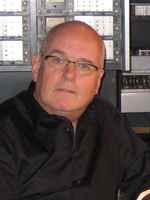 Engineer Richard Lush relates the overall tension of the day: “Looking back now it was great to be involved with The Beatles but there was a negative side. They spent so much time doing each song that I can remember sitting in the control room before a session dying to hear them start a new one. They must have done 'Ob-La-Di, Ob-La-Da' five nights running and it's not exactly the most melodic piece of music. They'd do it one night and you'd think 'that's it.' But then they'd come in the next day and do it again in a different key or with a different feel. Poor Ringo would be playing from about three in the afternoon until one in the morning, with few breaks in between, and then have to do it all over again the next night.” Engineer Richard Lush relates the overall tension of the day: “Looking back now it was great to be involved with The Beatles but there was a negative side. They spent so much time doing each song that I can remember sitting in the control room before a session dying to hear them start a new one. They must have done 'Ob-La-Di, Ob-La-Da' five nights running and it's not exactly the most melodic piece of music. They'd do it one night and you'd think 'that's it.' But then they'd come in the next day and do it again in a different key or with a different feel. Poor Ringo would be playing from about three in the afternoon until one in the morning, with few breaks in between, and then have to do it all over again the next night.”
 Just before the session dispersed at 3 am the next morning, a rough mono mix of the song was created by the engineering team of George Martin, Geoff Emerick and Richard Lush to be taken away by Paul for his inspection. Surely he would be happy with the song now! Geoff Emerick was convinced the song was complete at this point: “The remake was, I had to admit, quite good. It had a bouncier feel to it than the original version, which seemed a bit leaden by comparison, and when it was completed we all breathed a sign of relief that we wouldn't have to be working on the song anymore.” Just before the session dispersed at 3 am the next morning, a rough mono mix of the song was created by the engineering team of George Martin, Geoff Emerick and Richard Lush to be taken away by Paul for his inspection. Surely he would be happy with the song now! Geoff Emerick was convinced the song was complete at this point: “The remake was, I had to admit, quite good. It had a bouncier feel to it than the original version, which seemed a bit leaden by comparison, and when it was completed we all breathed a sign of relief that we wouldn't have to be working on the song anymore.”
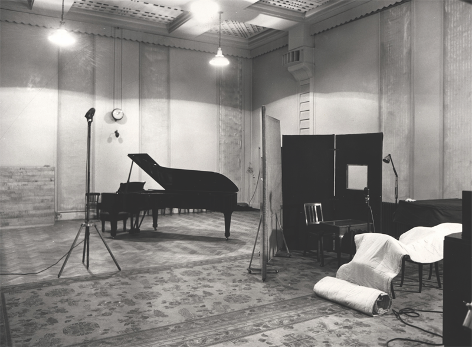 However..... “Sadly, Paul returned to his nitpicking ways the very next afternoon,” Geoff Emerick continues, “announcing peremptorily that he was still dissatisfied and wanted to remake the song yet again...despite the fact that Ringo wasn't even there.” On this day, July 9th, 1968, The Beatles arrived this time in EMI Studio Three for a late afternoon session from 4 to 9 pm, Ringo possibly not being informed they were meeting so early. Geoff Emerick relates: “Paul got behind the drums instead and led a clearly steamed Lennon and Harrison through another couple of run-throughs (takes 20 and 21)." These takes began with John announcing from the piano stool, "Don't break down, lads! Don't break down!" Then after counting off the next performance in German, John (piano), Paul (drums) and George (guitar) filled track one with their new rhythm track. Onto "take 21," Paul overdubbed another distorted acoustic guitar on track two along with someone hitting accentuating beats on the snare drum, and then they added lead and backing vocals onto tracks three and four. Paul then "finally capitulated and gave up," Geoff Emerick relates. However..... “Sadly, Paul returned to his nitpicking ways the very next afternoon,” Geoff Emerick continues, “announcing peremptorily that he was still dissatisfied and wanted to remake the song yet again...despite the fact that Ringo wasn't even there.” On this day, July 9th, 1968, The Beatles arrived this time in EMI Studio Three for a late afternoon session from 4 to 9 pm, Ringo possibly not being informed they were meeting so early. Geoff Emerick relates: “Paul got behind the drums instead and led a clearly steamed Lennon and Harrison through another couple of run-throughs (takes 20 and 21)." These takes began with John announcing from the piano stool, "Don't break down, lads! Don't break down!" Then after counting off the next performance in German, John (piano), Paul (drums) and George (guitar) filled track one with their new rhythm track. Onto "take 21," Paul overdubbed another distorted acoustic guitar on track two along with someone hitting accentuating beats on the snare drum, and then they added lead and backing vocals onto tracks three and four. Paul then "finally capitulated and gave up," Geoff Emerick relates.
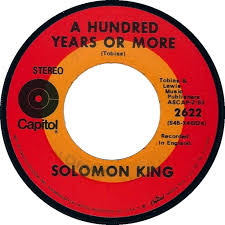 Ringo, probably arriving at the usual 7 pm, was reported to have walked into a session (presumably in the usual EMI Studio Two) for singer Solomon King. Not knowing where his bandmates were, he contributed a hand-clapping performance for Solomon King's song “A Hundred Years Or More.” At some point he must have realized that the rest of The Beatles were waiting for him in EMI Studio Three, their evening session beginning at 10 pm. Poor Ringo! Ringo, probably arriving at the usual 7 pm, was reported to have walked into a session (presumably in the usual EMI Studio Two) for singer Solomon King. Not knowing where his bandmates were, he contributed a hand-clapping performance for Solomon King's song “A Hundred Years Or More.” At some point he must have realized that the rest of The Beatles were waiting for him in EMI Studio Three, their evening session beginning at 10 pm. Poor Ringo!
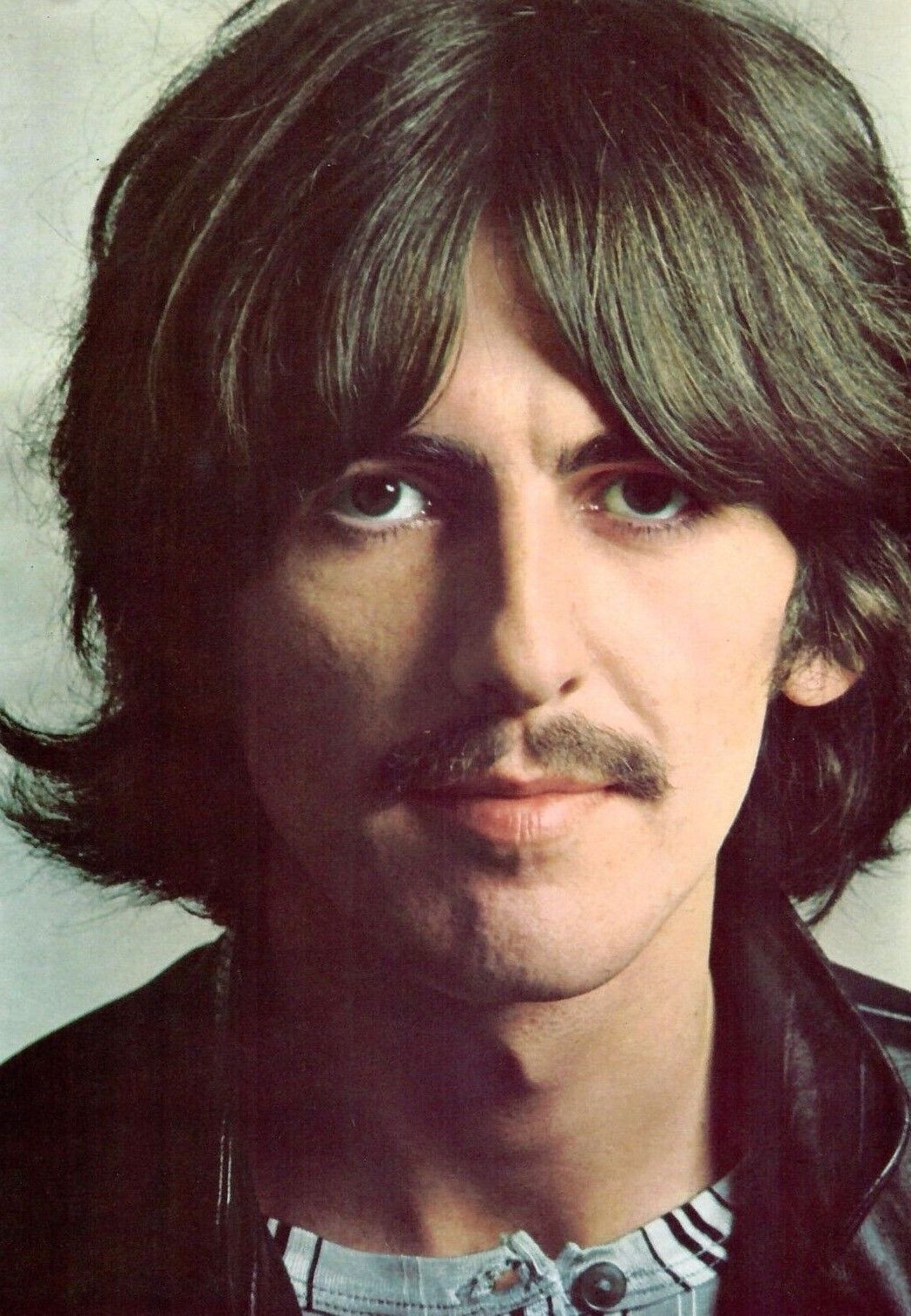 With all four Beatles now present, they worked at making the previous attempt at “Ob-La-Da, Ob-La-Da” the finished product after all. A decision was made to replace the vocals recorded on tracks three and four the previous day. Paul, John and George then “gathered around the microphone,” as Geoff Emerick relates, to record a lot of what is heard on the finished version, such as the laughing, joking, ho-hos and he-hees. With all four Beatles now present, they worked at making the previous attempt at “Ob-La-Da, Ob-La-Da” the finished product after all. A decision was made to replace the vocals recorded on tracks three and four the previous day. Paul, John and George then “gathered around the microphone,” as Geoff Emerick relates, to record a lot of what is heard on the finished version, such as the laughing, joking, ho-hos and he-hees.
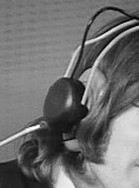 Included here are, after Paul sings “lend a hand,” John replies “arm” and then George cries “leg.” In the second bridge, after Paul sings “home sweet home,” John spells out “h – o – m – e – home.” Then, in the final verse, after Paul again sings “lend a hand,” George retorts “foot.” Geoff Emerick continues, “Interestingly, all the bad feelings of the past weeks seemed to evaporate as soon as they gathered around the mic and I fed tape echo into their headphones. That's all it took for them to suspend their petty disagreements; for those few moments, they would clown around and act silly again, like they did when they were kids, just starting out. Then as soon as they'd take the cans off, they'd go back to hating each other. It was very odd – it was almost as if having the headphones on and hearing that echo put them in a dreamlike state.” Included here are, after Paul sings “lend a hand,” John replies “arm” and then George cries “leg.” In the second bridge, after Paul sings “home sweet home,” John spells out “h – o – m – e – home.” Then, in the final verse, after Paul again sings “lend a hand,” George retorts “foot.” Geoff Emerick continues, “Interestingly, all the bad feelings of the past weeks seemed to evaporate as soon as they gathered around the mic and I fed tape echo into their headphones. That's all it took for them to suspend their petty disagreements; for those few moments, they would clown around and act silly again, like they did when they were kids, just starting out. Then as soon as they'd take the cans off, they'd go back to hating each other. It was very odd – it was almost as if having the headphones on and hearing that echo put them in a dreamlike state.”
With this, another tape reduction was necessary, which turned "take 13" into "take 22.” Onto this, all four Beatles overdubbed some vocal percussion and handclaps (Ringo did a lot of hand clapping on this day!). John then announced that he wanted to record another version of the previously recorded song “Revolution,” which ushered in some rehearsals that eventually ended the session at 3:30 am the following morning.
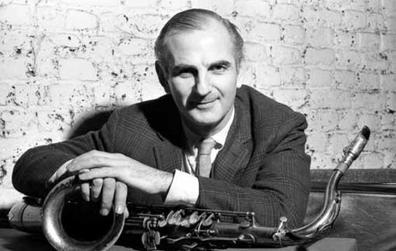 More attention was given to “Ob-La-Di, Ob-La-Da,” however, a couple days later, July 11th, 1968, as the group reassembled in EMI Studio Three at around 7 pm. Three saxophonists were once again employed to perform on this new version, two of which are thought to be Rex Morris and Ronnie Scott as well as an unnamed third musician. After their contribution was recorded, another tape reduction was needed, two attempts at this being made resulting in the first attempt ("take 23") being the keeper. Onto this, Paul overdubbed another bass guitar track, but apparently not with an actual bass guitar. In a 1994 interview with Tony Bacon, Paul explained that, concerning the bass on "Ob-La-Di, Ob-La-Da," he "double-tracked it with an acoustic guitar, which is a cool idea: an octave up from the bass, playing exactly the same on acoustic." He undoubtedly used the same distorted technique as described earlier. More attention was given to “Ob-La-Di, Ob-La-Da,” however, a couple days later, July 11th, 1968, as the group reassembled in EMI Studio Three at around 7 pm. Three saxophonists were once again employed to perform on this new version, two of which are thought to be Rex Morris and Ronnie Scott as well as an unnamed third musician. After their contribution was recorded, another tape reduction was needed, two attempts at this being made resulting in the first attempt ("take 23") being the keeper. Onto this, Paul overdubbed another bass guitar track, but apparently not with an actual bass guitar. In a 1994 interview with Tony Bacon, Paul explained that, concerning the bass on "Ob-La-Di, Ob-La-Da," he "double-tracked it with an acoustic guitar, which is a cool idea: an octave up from the bass, playing exactly the same on acoustic." He undoubtedly used the same distorted technique as described earlier.
 The night was then finished off with the team of George Martin, Geoff Emerick and 2nd engineer Phil McDonald creating yet another rough mono mix of the song, two attempts being made at this as well. By 3:45 am the next morning, this session was also then complete. The night was then finished off with the team of George Martin, Geoff Emerick and 2nd engineer Phil McDonald creating yet another rough mono mix of the song, two attempts being made at this as well. By 3:45 am the next morning, this session was also then complete.
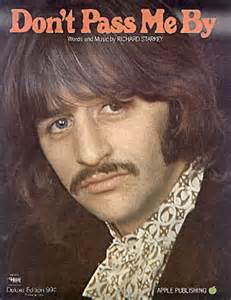 The following day, July 12th, 1968, The Beatles met in EMI Studio Two at around 3 pm to complete work on Ringo's composition “Don't Pass Me By,” afterwards sticking around to oversee two more attempts at a mono mix of “Ob-La-Da, Ob-La-Da.” Evidence of Paul, Ringo and George in the control room during this mixing session is contained on a tape of out-takes and studio chatter that was being compiled at The Beatles' request, the three of them announcing “remix ten” with various inflections and humorous accents when this song's mono mix was being created. By 11 pm this session was over, the newly created mono mix of Paul's song being taken away by him for more scrutiny. The following day, July 12th, 1968, The Beatles met in EMI Studio Two at around 3 pm to complete work on Ringo's composition “Don't Pass Me By,” afterwards sticking around to oversee two more attempts at a mono mix of “Ob-La-Da, Ob-La-Da.” Evidence of Paul, Ringo and George in the control room during this mixing session is contained on a tape of out-takes and studio chatter that was being compiled at The Beatles' request, the three of them announcing “remix ten” with various inflections and humorous accents when this song's mono mix was being created. By 11 pm this session was over, the newly created mono mix of Paul's song being taken away by him for more scrutiny.
Three days later, on July 15th, 1968, Paul's scrutiny revealed that he still wasn't satisfied with his lead vocals. That being the case, he gave his vocals another go in EMI Studio Two at an afternoon session held between 3:30 and 8 pm.
 Geoff Emerick recounts the details of this day. “After setting up the vocal microphone for Paul down in Studio Two and getting a headphone mix together, Richard (Lush) and I began the long, tedious process of rolling and re-rolling the tape as he experimented endlessly, making minute changes to the lead vocal, in search of some kind of elusive perfection that only he could hear in his head...'Paul, can you try rephrasing the last line of each verse?' George Martin asked in his gentle, slightly aristocratic voice...He was still trying to do his job, still trying to steer his charges toward increased musical sophistication and help push them to their best performances. 'If you think you can do it better, why don't you f*cking come down here and sing it yourself?' he snarled as he whipped off his headphones and glared up at the control room.” Geoff Emerick recounts the details of this day. “After setting up the vocal microphone for Paul down in Studio Two and getting a headphone mix together, Richard (Lush) and I began the long, tedious process of rolling and re-rolling the tape as he experimented endlessly, making minute changes to the lead vocal, in search of some kind of elusive perfection that only he could hear in his head...'Paul, can you try rephrasing the last line of each verse?' George Martin asked in his gentle, slightly aristocratic voice...He was still trying to do his job, still trying to steer his charges toward increased musical sophistication and help push them to their best performances. 'If you think you can do it better, why don't you f*cking come down here and sing it yourself?' he snarled as he whipped off his headphones and glared up at the control room.”
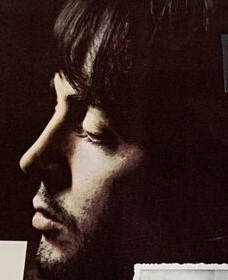 “Stunned, I looked over at George (Martin). Even he couldn't understand why Paul was still trying to redo the vocal track; in those days you simply didn't spend huge amounts of time doing that sort of fine-tuning. But as the ferocity of McCartney's verbal attack sunk in, he turned pale, clearly choking back his anger and humiliation. What happened next shocked me to the core: in sheer frustration, quiet, low-key George Martin actually began shouting back at Paul. 'Then bloody sing it again!' he yelled over the talkback, causing me to wince. 'I give up. I just don't know any better how to help you.' It was the first time I had ever heard George Martin raise his voice in a session. The silence following the outburst was equally deafening.” It was this event that was the last straw for engineer Geoff Emerick, who decided that he no longer wanted to work with The Beatles anymore. He showed up for their session on the following day and then, after a long history of working with the band, abandoned his role as engineer for the rest of the “White Album.” (He eventually resumed working with The Beatles nine months later.) “Stunned, I looked over at George (Martin). Even he couldn't understand why Paul was still trying to redo the vocal track; in those days you simply didn't spend huge amounts of time doing that sort of fine-tuning. But as the ferocity of McCartney's verbal attack sunk in, he turned pale, clearly choking back his anger and humiliation. What happened next shocked me to the core: in sheer frustration, quiet, low-key George Martin actually began shouting back at Paul. 'Then bloody sing it again!' he yelled over the talkback, causing me to wince. 'I give up. I just don't know any better how to help you.' It was the first time I had ever heard George Martin raise his voice in a session. The silence following the outburst was equally deafening.” It was this event that was the last straw for engineer Geoff Emerick, who decided that he no longer wanted to work with The Beatles anymore. He showed up for their session on the following day and then, after a long history of working with the band, abandoned his role as engineer for the rest of the “White Album.” (He eventually resumed working with The Beatles nine months later.)
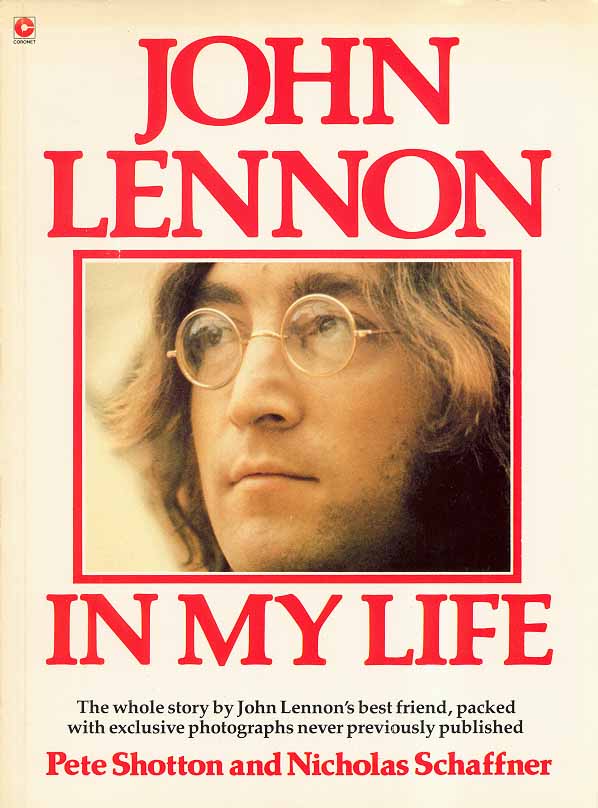 Paul finally completed his lead vocal track to his own satisfaction on this day, leaving in a particular lyric flub. Friend Pete Shotton was present at this session and, in his book "John Lennon: In My Life," relates the following eyewitness acount of this lyrical mistake: "After finally turning in what sounded like a flawless performance, (Paul) burst out laughing. 'Oh, sh*t!' he said 'We'll have to do it again!' 'Well, it sounded OK to me,' John yawned. 'Yeah,' George agreed. 'It was perfect.' 'But didn't you notice?' Paul demanded. 'Notice what?' said John. 'I just sang "Desmond stays at home and does his pretty face"...I shouldn've sung "Molly!"' The others refused to believe him - until George Martin played back the tape and proved Paul was right. 'Oh, it sounds great anyway,' Paul concluded. 'Let's just leave it in - create a bit of confusion there. Everyone will wonder whether Desmond's a bisexual or a transvestite.'" Paul finally completed his lead vocal track to his own satisfaction on this day, leaving in a particular lyric flub. Friend Pete Shotton was present at this session and, in his book "John Lennon: In My Life," relates the following eyewitness acount of this lyrical mistake: "After finally turning in what sounded like a flawless performance, (Paul) burst out laughing. 'Oh, sh*t!' he said 'We'll have to do it again!' 'Well, it sounded OK to me,' John yawned. 'Yeah,' George agreed. 'It was perfect.' 'But didn't you notice?' Paul demanded. 'Notice what?' said John. 'I just sang "Desmond stays at home and does his pretty face"...I shouldn've sung "Molly!"' The others refused to believe him - until George Martin played back the tape and proved Paul was right. 'Oh, it sounds great anyway,' Paul concluded. 'Let's just leave it in - create a bit of confusion there. Everyone will wonder whether Desmond's a bisexual or a transvestite.'"
Ten attempts at creating a mono mix of the now completed song were attempted, although none of these were used for the released album.
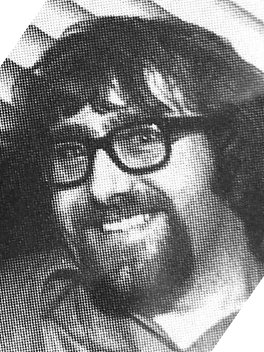 Apparently, Paul did not receive a copy of any of the mono mixes created on this day so, on August 27th, 1968, a tape copy was made in the control room of EMI Studio Two of the song, as well as three others, which were taken away by Mal Evans to be given to the group. This was probably the mix that eventually ended up in the hands of Peter Sellers, as mentioned above. Apparently, Paul did not receive a copy of any of the mono mixes created on this day so, on August 27th, 1968, a tape copy was made in the control room of EMI Studio Two of the song, as well as three others, which were taken away by Mal Evans to be given to the group. This was probably the mix that eventually ended up in the hands of Peter Sellers, as mentioned above.
Both the stereo and mono mixes that were contained on the released album were created on October 12th, 1968 in the control room of EMI Studio Two by the team of George Martin, Ken Scott and John Smith. This team worked from 7 pm to 5:45 am the next morning also creating mixes for various other “White Album” tracks. The stereo mix came first, four attempts being made, followed by the mono mix which was accomplished in one try. With both of these mixes, the tape was speeded up by a semitone to B flat in order to create a more buoyant feel. One noticeable difference between the two is the absence of handclapping at the beginning of the mono mix.
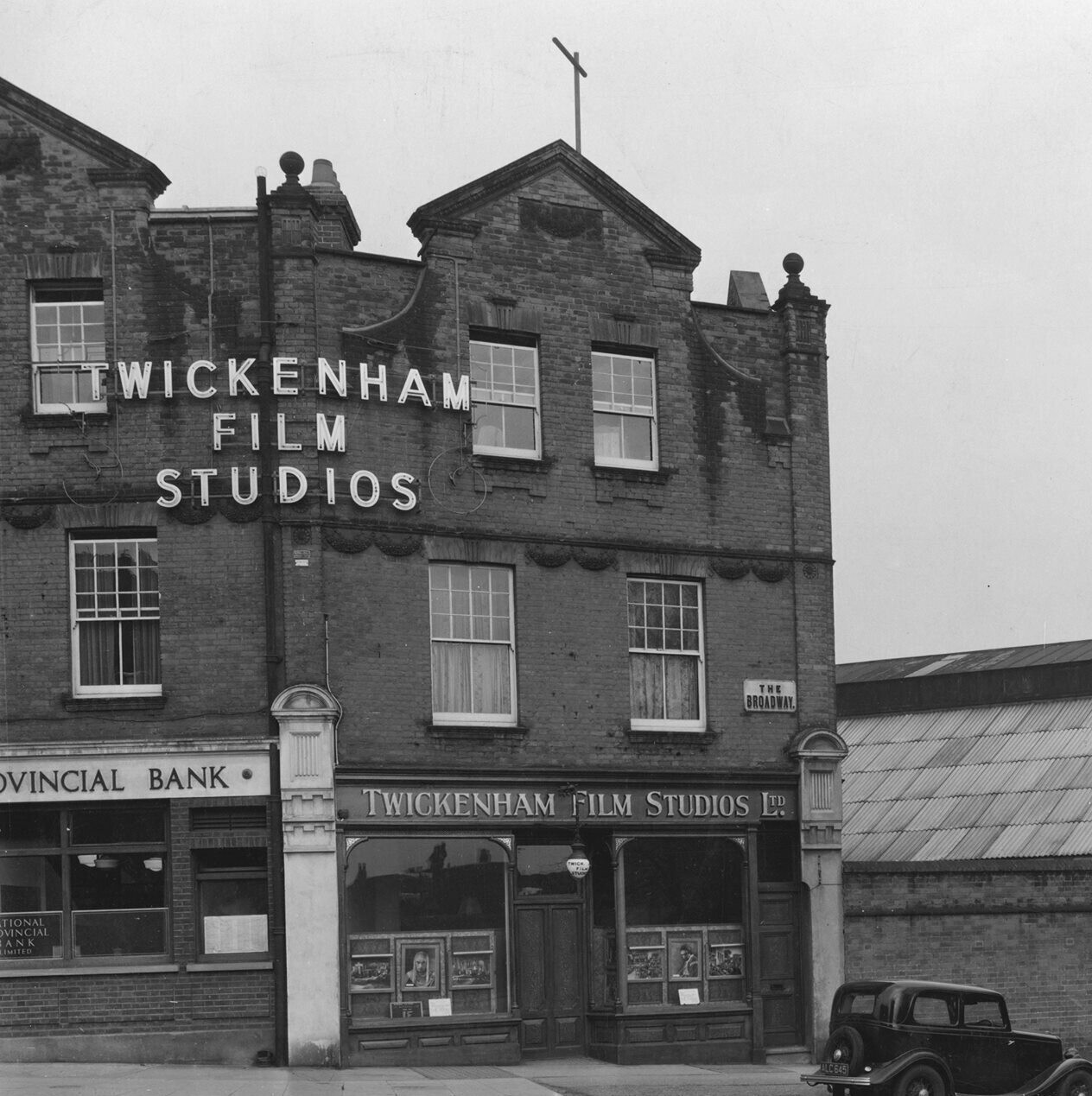 Snatches of The Beatles performing the song during the “Get Back/Let It Be” sessions were caught on tape during January of 1969. There were four times that “Ob-La-Di, Ob-La-Da” was touched on, the dates being January 3rd at Twickenham Film Studios, and the 13th, 14th and 24th at Apple Studios. One silly version features John taking most of the lead vocals, singing “Oh, my God, Oh, my God” where the song's title should be, as well as a verse that contains the lyrics: “Desmond has a sparrow in his pocketbook / Molly had an eagle in the sand / Molly said to Dezzy, 'My, I like your hook / And when you hit me I believe your in the band.'” John then concludes the song with “Well, if you want some jam...” Snatches of The Beatles performing the song during the “Get Back/Let It Be” sessions were caught on tape during January of 1969. There were four times that “Ob-La-Di, Ob-La-Da” was touched on, the dates being January 3rd at Twickenham Film Studios, and the 13th, 14th and 24th at Apple Studios. One silly version features John taking most of the lead vocals, singing “Oh, my God, Oh, my God” where the song's title should be, as well as a verse that contains the lyrics: “Desmond has a sparrow in his pocketbook / Molly had an eagle in the sand / Molly said to Dezzy, 'My, I like your hook / And when you hit me I believe your in the band.'” John then concludes the song with “Well, if you want some jam...”
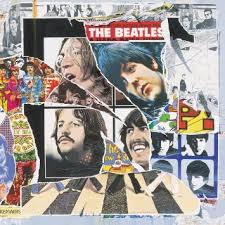 A stereo mix of the original version of “Ob-La-Di, Ob-La-Da,” as recorded on July 3rd, 4th and 5th, 1968, was created by George Martin and Geoff Emerick sometime in 1996 for inclusion on the compilation album “Anthology 3.” Edited onto the beginning of this mix is John shouting “Yes sir, Take one of the Mighty Jumbo Band,” as well as John's exclamation “Ob-la-di, ob-la-da, brother” at the song's conclusion. A stereo mix of the original version of “Ob-La-Di, Ob-La-Da,” as recorded on July 3rd, 4th and 5th, 1968, was created by George Martin and Geoff Emerick sometime in 1996 for inclusion on the compilation album “Anthology 3.” Edited onto the beginning of this mix is John shouting “Yes sir, Take one of the Mighty Jumbo Band,” as well as John's exclamation “Ob-la-di, ob-la-da, brother” at the song's conclusion.
 Although it's not very noticeable, piano from “Ob-La-Di, Ob-La-Da” is featured in the mash-up of “Lady Madonna” created by George Martin and his son Giles Martin sometime between 2004 and 2006. This creation was included on the album “Love." Although it's not very noticeable, piano from “Ob-La-Di, Ob-La-Da” is featured in the mash-up of “Lady Madonna” created by George Martin and his son Giles Martin sometime between 2004 and 2006. This creation was included on the album “Love."
Giles Martin and engineer Sam Okell then returned to the original master tapes of the song sometime in 2018 to create a vibrant new mix for the 50th Anniversary of the "White Album." Also created at this time was a stereo mix of the original Esher demo from May of 1968, as well as "take five" (mislabeled as "take three") from the original version of the song, these mixes appearing on various editions of the 50th Anniversary releases.
Song Structure and Style
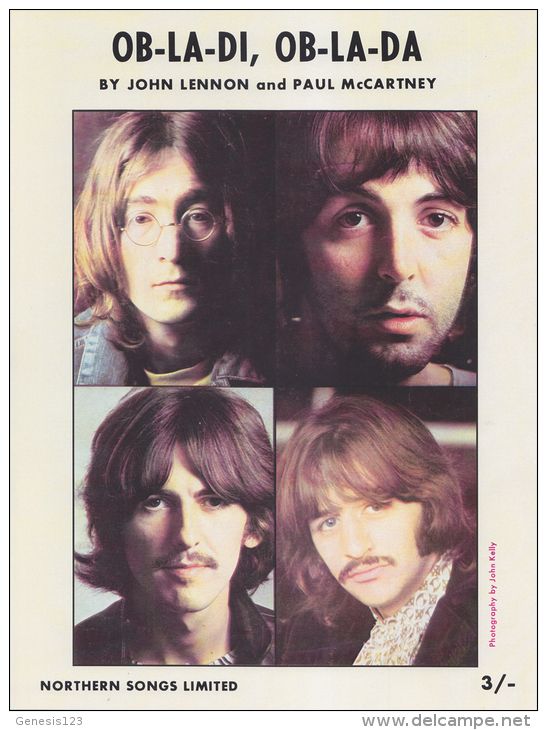 The song structure follows a simple pattern of 'verse/ chorus/ verse/ chorus/ bridge/ verse/ chorus/ bridge/ verse/ chorus' (or ababcabcab) with a simple introduction and conclusion thrown in and no solo or instrumental section required therein. The song structure follows a simple pattern of 'verse/ chorus/ verse/ chorus/ bridge/ verse/ chorus/ bridge/ verse/ chorus' (or ababcabcab) with a simple introduction and conclusion thrown in and no solo or instrumental section required therein.
As for the style of the song, Paul was working hard to capture a Jamaican-flavored sound. Around the time of the album's release, when asked about the reason he chose a Jamaican style for this song, Paul stated: “I've no idea why it's Jamaican, or anything, it's just because I like that kind of music. I think this was mainly me, John's a bit more Nigerian influenced.” Paul was attempting to emulate the pseudo-reggae style of music coined “ska,” which had become quite popular in Britain in the '60s as commonly found on the record label “Blue Beat.” With the accents on the offbeats, John hit upon it nicely with his piano playing on the released version of the song, something not quite captured in The Beatles' first recorded version. The pseudo-reggae feel of the song was touched on in Paul's 2021 Hulu series "McCartney 3,2,1," where he stated: "Even though you sound like something, it's gonna sound like you," this being an understandable explanation that, no matter how much they tried to sound like someone else, they inadvertently always just sounded like The Beatles. An interesting note is that The Beatles touched on the “ska” craze much earlier in their career, the solo portion of the song “I Call Your Name” capturing this feel quite nicely.
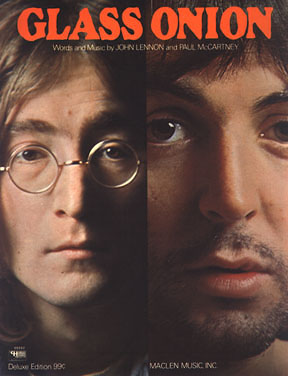 “Ob-La-Di, Ob-La-Da” starts off with a five measure introduction, the first measure consisting fully of John's piano chords, this startling the listener away from the spooky gloominess of the faded orchestral score that concludes the previous track “Glass Onion.” The second and third measures feature John's syncopated piano chording along with Paul's bass guitar performance on acoustic guitar, the third measure including a spot of handclapping (stereo version only). The fourth and fifth measures bring in Ringo's drums, George's acoustic guitar and Paul's actual bass guitar performance, which is mimicking the simple pattern played by the acoustic bass guitar overdub. “Ob-La-Di, Ob-La-Da” starts off with a five measure introduction, the first measure consisting fully of John's piano chords, this startling the listener away from the spooky gloominess of the faded orchestral score that concludes the previous track “Glass Onion.” The second and third measures feature John's syncopated piano chording along with Paul's bass guitar performance on acoustic guitar, the third measure including a spot of handclapping (stereo version only). The fourth and fifth measures bring in Ringo's drums, George's acoustic guitar and Paul's actual bass guitar performance, which is mimicking the simple pattern played by the acoustic bass guitar overdub.
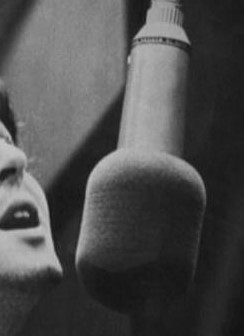 The first verse, like all the verses, is a uniform eight measures long, this one continuing the same instrumentation from the introduction with the inclusion of Paul's single-tracked lead vocal, treated nonetheless with much ADT (Artificial Double Tracking). The first eight-measure chorus is heard next, which continues the same instrumentation with the only addition being John and George's backing vocals which are simply done in unison with Paul's lead vocals. The first verse, like all the verses, is a uniform eight measures long, this one continuing the same instrumentation from the introduction with the inclusion of Paul's single-tracked lead vocal, treated nonetheless with much ADT (Artificial Double Tracking). The first eight-measure chorus is heard next, which continues the same instrumentation with the only addition being John and George's backing vocals which are simply done in unison with Paul's lead vocals.
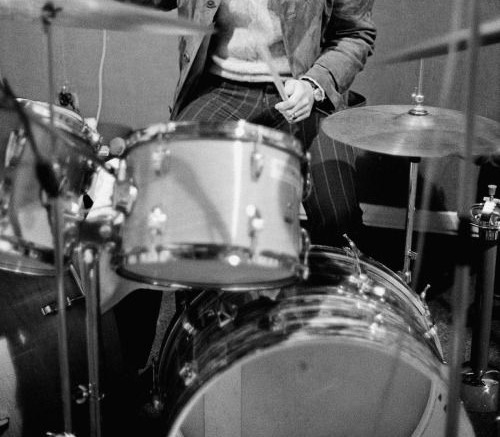 The second verse then commences which is identical to the first except for the new lyrics and a couple of word insertions, this being John repeating the words “ring” and “sing” at the end of those lyric lines. The chorus that follows has all the elements of the first with the addition of overdubbed falsetto vocals singing “la, la, la....bra, la, la, how the life goes on” twice. With some commotion going on throughout, such as assorted clicks and pops from one of the vocal overdub tracks, we hear Paul exclaim “yeah” along with the first drum break from Ringo in the eighth measure. The second verse then commences which is identical to the first except for the new lyrics and a couple of word insertions, this being John repeating the words “ring” and “sing” at the end of those lyric lines. The chorus that follows has all the elements of the first with the addition of overdubbed falsetto vocals singing “la, la, la....bra, la, la, how the life goes on” twice. With some commotion going on throughout, such as assorted clicks and pops from one of the vocal overdub tracks, we hear Paul exclaim “yeah” along with the first drum break from Ringo in the eighth measure.
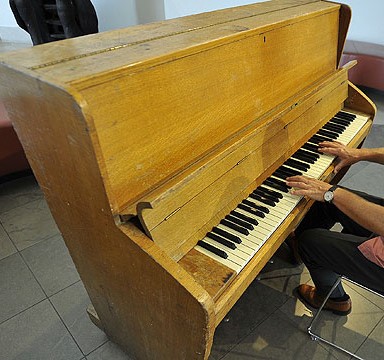 The first occurrence of the eight-measure bridge comes next, the first six measures of which contain the same instrumental elements as heard in the song thus far. After the subtle sound of someone saying what sounds like “Go” on the downbeat of the first measure, Paul sings solo single-tracked lead vocals throughout while adding in some “chicka-chick, chicka-chick...” reggae-sounding vocal percussion in the third and fourth measures. Also added here are overdubbed quickly shaken maracas (possibly by Ringo) in the second through sixth measures as well as harmonized saxophones in measures three through five. Measures seven and eight show all instruments cutting out except for John's syncopated piano chords. Paul continues singing to finish out the bridge, complimented by John's “oooooh, ho-ho-ho-ho” in the final measure, this quietly continuing into the first measure of the verse that follows. The first occurrence of the eight-measure bridge comes next, the first six measures of which contain the same instrumental elements as heard in the song thus far. After the subtle sound of someone saying what sounds like “Go” on the downbeat of the first measure, Paul sings solo single-tracked lead vocals throughout while adding in some “chicka-chick, chicka-chick...” reggae-sounding vocal percussion in the third and fourth measures. Also added here are overdubbed quickly shaken maracas (possibly by Ringo) in the second through sixth measures as well as harmonized saxophones in measures three through five. Measures seven and eight show all instruments cutting out except for John's syncopated piano chords. Paul continues singing to finish out the bridge, complimented by John's “oooooh, ho-ho-ho-ho” in the final measure, this quietly continuing into the first measure of the verse that follows.
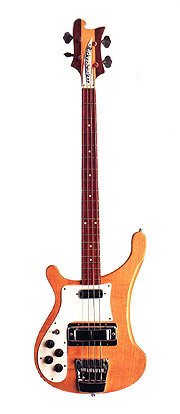 The third verse comes next, following the same format instrumentally as the others but with a slight drum fill from Ringo in the fourth measure. This measure also includes the “arm” and “leg” vocal hi-jinx as mentioned above. Paul adds a few additional extraneous notes on one of his bass performances during measures two and three. The saxophones enter in again in the eighth measure of this verse with a counter-melody line that continues throughout the chorus that follows. Paul excitedly raises the range of the chorus melody line in the final measure of the verse, but maintains the true melody throughout this third chorus as it is sung in unison with John and George as before. John adds a little “hee-hee-hee” in the background of the chorus's fourth measure and a piano glissando in the eighth measure. The third verse comes next, following the same format instrumentally as the others but with a slight drum fill from Ringo in the fourth measure. This measure also includes the “arm” and “leg” vocal hi-jinx as mentioned above. Paul adds a few additional extraneous notes on one of his bass performances during measures two and three. The saxophones enter in again in the eighth measure of this verse with a counter-melody line that continues throughout the chorus that follows. Paul excitedly raises the range of the chorus melody line in the final measure of the verse, but maintains the true melody throughout this third chorus as it is sung in unison with John and George as before. John adds a little “hee-hee-hee” in the background of the chorus's fourth measure and a piano glissando in the eighth measure.
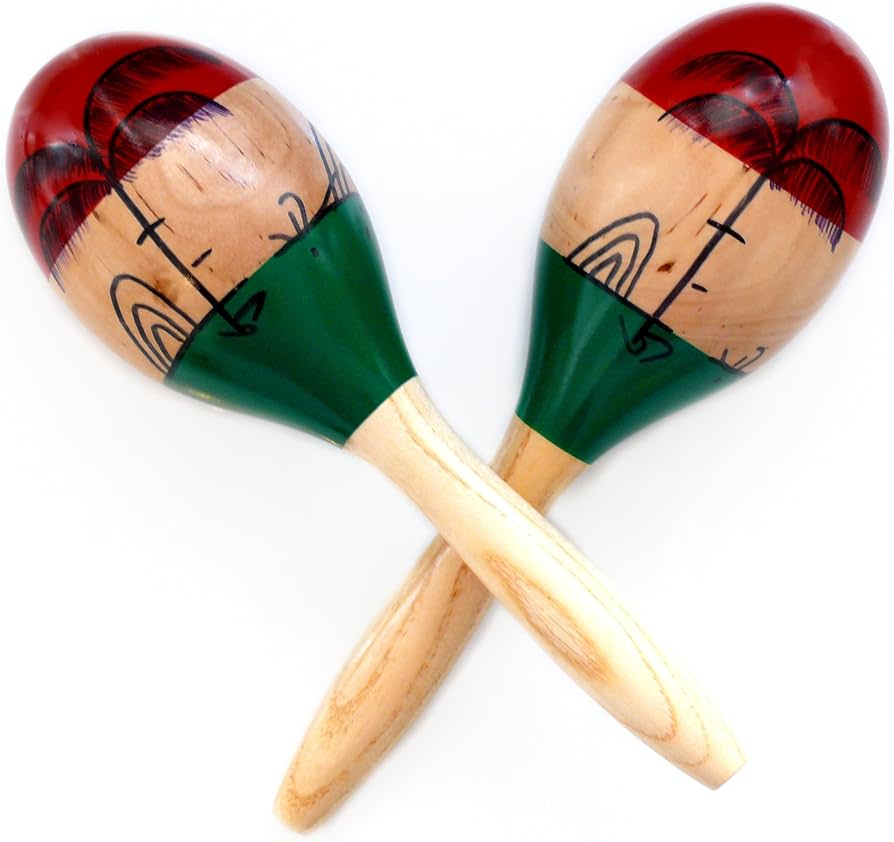 The second appearance of the bridge then appears, the maracas appearing again in the second through sixth measures but being played in a standard way this time around instead of shaken vigorously. The saxophones appear again in the third and fourth measures as before but also interject a melody line in the seventh and eighth measures this time as well. In the far background, during the first saxophone line, one can hear John's “h-o-m-e, home” mumble as mentioned above. Also heard in the seventh and eighth measures are what sound like bongos, Paul harmonizing with himself on the line “Desmond and Molly Jones,” and John singing “ha-ha-ha-ha...” in the background. The second appearance of the bridge then appears, the maracas appearing again in the second through sixth measures but being played in a standard way this time around instead of shaken vigorously. The saxophones appear again in the third and fourth measures as before but also interject a melody line in the seventh and eighth measures this time as well. In the far background, during the first saxophone line, one can hear John's “h-o-m-e, home” mumble as mentioned above. Also heard in the seventh and eighth measures are what sound like bongos, Paul harmonizing with himself on the line “Desmond and Molly Jones,” and John singing “ha-ha-ha-ha...” in the background.
 The fourth verse appears next which is lyrically a repeat of the third verse. Assorted squeaks and background vocalizations occur during this verse, including some “ha-ha-ha”s in the fourth and fifth measures and George's reply of “foot” in the fourth measure as an answer to Paul's “lend a hand” in the lead vocals. A touch of bongos is still apparent in the second measure as are two overdubbed piano phrases in the fourth and sixth measures. Paul's character mix up occurs in this verse, humorously exchanging “Desmond” and “Molly” as mentioned above, the eighth measure also including a tom-tom break from Ringo to usher in the next section. The fourth verse appears next which is lyrically a repeat of the third verse. Assorted squeaks and background vocalizations occur during this verse, including some “ha-ha-ha”s in the fourth and fifth measures and George's reply of “foot” in the fourth measure as an answer to Paul's “lend a hand” in the lead vocals. A touch of bongos is still apparent in the second measure as are two overdubbed piano phrases in the fourth and sixth measures. Paul's character mix up occurs in this verse, humorously exchanging “Desmond” and “Molly” as mentioned above, the eighth measure also including a tom-tom break from Ringo to usher in the next section.
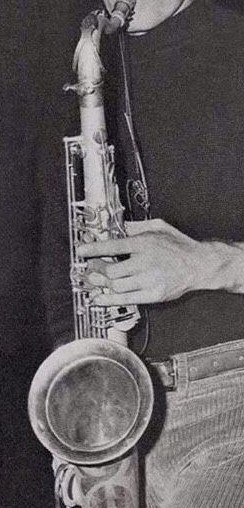 The final chorus then appears which includes Paul's higher pitched vocalization whenever the words “Ob-La-Di, Ob-La-Da” occur. The saxophone counter-melody line returns throughout this chorus, as does the continuation of assorted “ha-ha-ha”s in the fourth and fifth measures. This chorus is seven measures long, however, the final measure clipped off to bring in the song's three-measure conclusion. The chord goes minor for the first two of these measures, Ringo performing a drum break at the end of the first measure where the eighth measure of the chorus would have been. Some tinkling percussion and high pitched “ha-ha-ha”s appear in these measures as does Paul's new lyric “and if you want some fun...take ob-la-di-bla-da” performed double-tracked this time. The song ends suddenly on the fourth beat of the third measure with John's final piano chord, the laughter continuing afterward for a moment or two. John is heard saying “thank you,” as if he is relieved that the song is now complete. The final chorus then appears which includes Paul's higher pitched vocalization whenever the words “Ob-La-Di, Ob-La-Da” occur. The saxophone counter-melody line returns throughout this chorus, as does the continuation of assorted “ha-ha-ha”s in the fourth and fifth measures. This chorus is seven measures long, however, the final measure clipped off to bring in the song's three-measure conclusion. The chord goes minor for the first two of these measures, Ringo performing a drum break at the end of the first measure where the eighth measure of the chorus would have been. Some tinkling percussion and high pitched “ha-ha-ha”s appear in these measures as does Paul's new lyric “and if you want some fun...take ob-la-di-bla-da” performed double-tracked this time. The song ends suddenly on the fourth beat of the third measure with John's final piano chord, the laughter continuing afterward for a moment or two. John is heard saying “thank you,” as if he is relieved that the song is now complete.
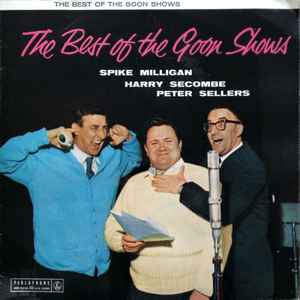 Despite all the aggravation and because of the hard work that went into it, this song taking the longest of all the tracks on the “White Album” to record, the listener is treated to the illusion of frivolity between the four happy-go-lucky boys from Liverpool, hamming it up with their “Goons”-like humor similar to what is heard on their early Christmas messages to their fan club members. Paul may be the driving force on the song, but John plays a vital role in giving it the “ska” feel on the piano, something Paul had been reaching for all along. Paul's bass work is rudimentary throughout, but purposely planned that way to give the song that easy accessibility he desired. Ringo and George put in suitable performances as well. Overall, the listener is treated to what resulted in a fun Jamaican-style song that, once inserted into the brain, isn't easily removed. Despite all the aggravation and because of the hard work that went into it, this song taking the longest of all the tracks on the “White Album” to record, the listener is treated to the illusion of frivolity between the four happy-go-lucky boys from Liverpool, hamming it up with their “Goons”-like humor similar to what is heard on their early Christmas messages to their fan club members. Paul may be the driving force on the song, but John plays a vital role in giving it the “ska” feel on the piano, something Paul had been reaching for all along. Paul's bass work is rudimentary throughout, but purposely planned that way to give the song that easy accessibility he desired. Ringo and George put in suitable performances as well. Overall, the listener is treated to what resulted in a fun Jamaican-style song that, once inserted into the brain, isn't easily removed.
American Releases
November 25th, 1968, was the release date for "The Beatles" (aka, the "White Album") which featured "Ob-La-Di, Ob-La-Da" as its most popular track at the time. It hit the stores as a double CD set for the first time on August 24th, 1987, was re-released as a CD in a 30th Anniversary Edition on November 23rd, 1998, then came out as a remastered CD set on September 9th, 2009, and then as a mono vinyl set on September 9th, 2014. A vibrant new stereo mix of the album was then released on vinyl on November 9th, 2018.
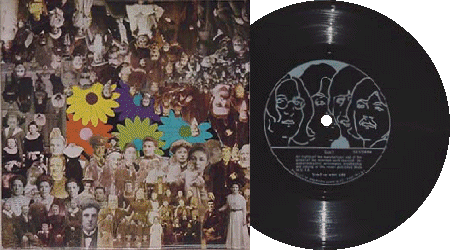 A small segment of the song was included on “The Beatles 1968 Christmas Record,” which was sent to members of their American fan club in December of 1968. The introduction to “Ob-La-Di, Ob-La-Da” is heard near the beginning of the record with other piano tinklings from Paul superimposed on top of it, Paul then begins singing an adlibbed song with rambling lyrics such as “Happy New Year, Happy Christmas, Happy Easter, Happy Autumn...” while accompanying himself on acoustic guitar. And then the random recording goes on from there. A small segment of the song was included on “The Beatles 1968 Christmas Record,” which was sent to members of their American fan club in December of 1968. The introduction to “Ob-La-Di, Ob-La-Da” is heard near the beginning of the record with other piano tinklings from Paul superimposed on top of it, Paul then begins singing an adlibbed song with rambling lyrics such as “Happy New Year, Happy Christmas, Happy Easter, Happy Autumn...” while accompanying himself on acoustic guitar. And then the random recording goes on from there.
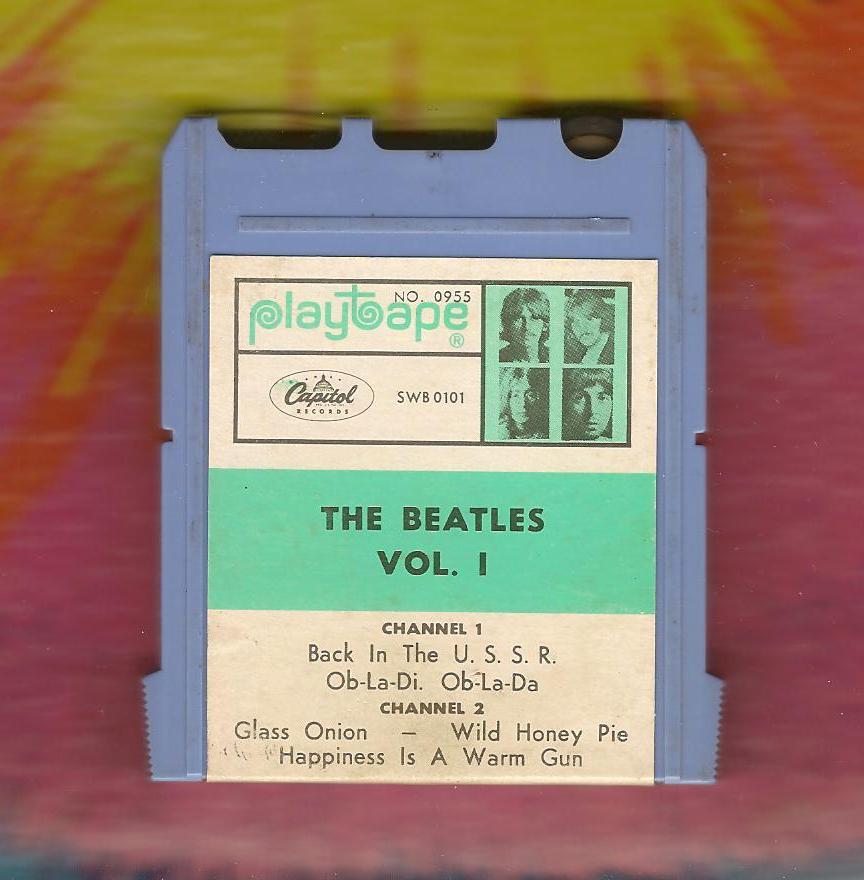 Sometime during 1969, a five song “Playtape” was released entitled “Beatles Vol. I” (one of five volumes) by Capitol records in order to capitalize on this recent popular format for portable tape players. “Ob-La-Di, Ob-La-Da” was the second song on this release, which focused on tracks from “side one” of the “White Album.” This is a tough one to find today. Sometime during 1969, a five song “Playtape” was released entitled “Beatles Vol. I” (one of five volumes) by Capitol records in order to capitalize on this recent popular format for portable tape players. “Ob-La-Di, Ob-La-Da” was the second song on this release, which focused on tracks from “side one” of the “White Album.” This is a tough one to find today.
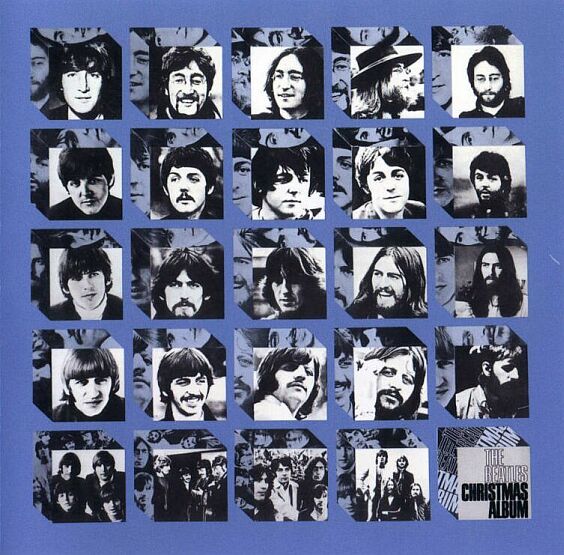 Sometime in the spring of 1971, US fan club members received an Apple album in the mail, the last installment of Christmas records called “The Beatles' Christmas Album.” This album featured all seven of the Christmas messages The Beatles recorded throughout their career, the 1968 recording that included the snippet of “Ob-La-Di, Ob-La-Da” included therein. Sometime in the spring of 1971, US fan club members received an Apple album in the mail, the last installment of Christmas records called “The Beatles' Christmas Album.” This album featured all seven of the Christmas messages The Beatles recorded throughout their career, the 1968 recording that included the snippet of “Ob-La-Di, Ob-La-Da” included therein.
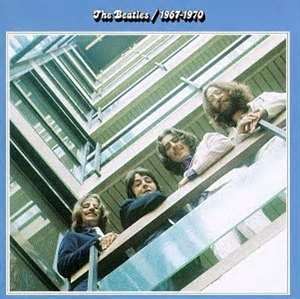 The first official Beatles “greatest hits” packages in the US were released on April 2nd, 1973, the more popular of the two being “The Beatles/1967-1970” (aka, the “Blue Album”). Only three “White Album” tracks made this compilation, “Ob-La-Di, Ob-La-Da” being one of them. This album set made it to CD on October 5th, 1993 and then as a remastered CD set on October 19th, 2010 and remastered vinyl on October 31st, 2014. The first official Beatles “greatest hits” packages in the US were released on April 2nd, 1973, the more popular of the two being “The Beatles/1967-1970” (aka, the “Blue Album”). Only three “White Album” tracks made this compilation, “Ob-La-Di, Ob-La-Da” being one of them. This album set made it to CD on October 5th, 1993 and then as a remastered CD set on October 19th, 2010 and remastered vinyl on October 31st, 2014.
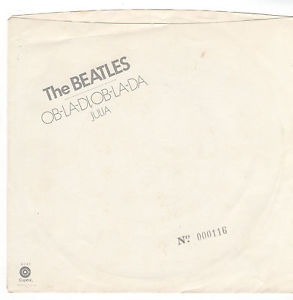 Although the song was not released as a single when the “White Album” came out, it eventually did get released in this format during a resurgence in Beatles popularity in the later '70s. This single was released on November 8th, 1976 with John's track “Julia” on the b-side, complete with a simulation of the “White Album” cover as a picture sleeve. Demonstration copies were also prepared by Capitol that featured "Ob-La-Di, Ob-La-Da" on both sides of the disc, one in stereo and one in mono that simply combined both channels into one (not the original 1968 mono mix). This single, however, failed to penetrate the Billboard Top 40, peaking at #49. Although the song was not released as a single when the “White Album” came out, it eventually did get released in this format during a resurgence in Beatles popularity in the later '70s. This single was released on November 8th, 1976 with John's track “Julia” on the b-side, complete with a simulation of the “White Album” cover as a picture sleeve. Demonstration copies were also prepared by Capitol that featured "Ob-La-Di, Ob-La-Da" on both sides of the disc, one in stereo and one in mono that simply combined both channels into one (not the original 1968 mono mix). This single, however, failed to penetrate the Billboard Top 40, peaking at #49.
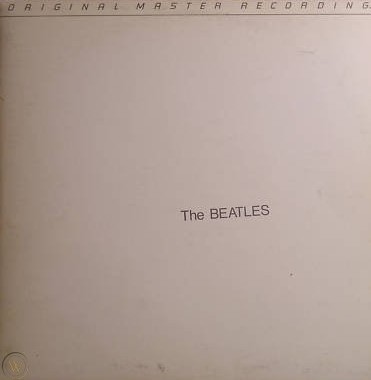 An interesting US vinyl edition of the “White Album” was released on January 7th, 1982, this being manufactured by Mobile Fidelity Sound Lab in Chatsworth, California as part of their "Original Master Recording" series. Their practice was to prepare a new master utilizing half-speed mastering technology from the original master tapes, in this case using the leased sub-master from Capitol Records. This release, which sounded superior to all previous British and American pressings, was packaged in a non-embossed unnumbered cover that did not include the usual poster/lyric sheet or individual Beatles portraits as contained in standard releases. This nonetheless excellent edition of the album was only available for a short time and is quite collectible today. An interesting US vinyl edition of the “White Album” was released on January 7th, 1982, this being manufactured by Mobile Fidelity Sound Lab in Chatsworth, California as part of their "Original Master Recording" series. Their practice was to prepare a new master utilizing half-speed mastering technology from the original master tapes, in this case using the leased sub-master from Capitol Records. This release, which sounded superior to all previous British and American pressings, was packaged in a non-embossed unnumbered cover that did not include the usual poster/lyric sheet or individual Beatles portraits as contained in standard releases. This nonetheless excellent edition of the album was only available for a short time and is quite collectible today.
The above mentioned single was re-released as a “For Jukebox Only” 45 on clear vinyl on January 24th, 1996. This Capitol Cema series single is another rather difficult one to find.
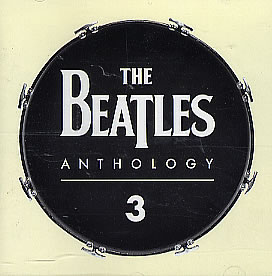 On October 28th, 1996, the first version of “Ob-La-Di, Ob-La-Da” was finally revealed on the compilation album “Anthology 3.” Since this was a long sought after track, it was truly a highlight of this release, even making it onto the five song CD Sampler of this release, which was produced for promotional purposes only and distributed to radio stations approximately around the time of release of the “Anthology 3” set. This CD Sampler is yet another hard find. On October 28th, 1996, the first version of “Ob-La-Di, Ob-La-Da” was finally revealed on the compilation album “Anthology 3.” Since this was a long sought after track, it was truly a highlight of this release, even making it onto the five song CD Sampler of this release, which was produced for promotional purposes only and distributed to radio stations approximately around the time of release of the “Anthology 3” set. This CD Sampler is yet another hard find.
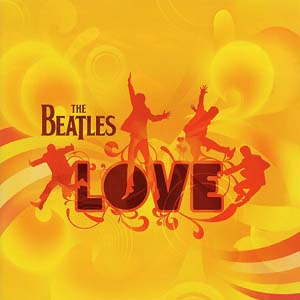 A small bit of the song is also featured on the November 20th, 2006 released album “Love,” as part of the mash-up of “Lady Madonna” mentioned above. A small bit of the song is also featured on the November 20th, 2006 released album “Love,” as part of the mash-up of “Lady Madonna” mentioned above.
The original 1968 mono mix of “Ob-La-Di, Ob-La-Da” first premiered in America on September 9th, 2009, as part of the CD box set “The Beatles In Mono,” the entire “White Album” being part of that set. The vinyl edition of this box set first came out on September 9th, 2014.
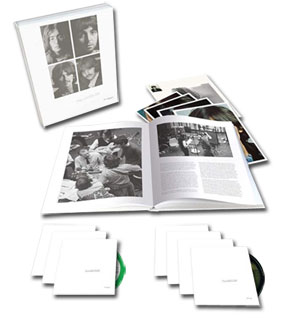 On November 9th, 2018, various editions of the "White Album" were released to commemorate its 50th Anniversary that featured interesting versions of "Ob-La-Di, Ob-La-Da." The "Deluxe" edition, which was made available in a 3CD set and a limited edition 180-gram 4LP vinyl set, contains the newly created Giles Martin mix of the "White Album" as well as the complete set of Esher demos that The Beatles recorded in late May of 1968. The "Super Deluxe" 6CD + 1Blu-ray edition also contains the never-before-heard "take five" (mislabeled as "take three") from the original version of the song as recorded on July 3rd , 4th and 5th, 1968. On November 9th, 2018, various editions of the "White Album" were released to commemorate its 50th Anniversary that featured interesting versions of "Ob-La-Di, Ob-La-Da." The "Deluxe" edition, which was made available in a 3CD set and a limited edition 180-gram 4LP vinyl set, contains the newly created Giles Martin mix of the "White Album" as well as the complete set of Esher demos that The Beatles recorded in late May of 1968. The "Super Deluxe" 6CD + 1Blu-ray edition also contains the never-before-heard "take five" (mislabeled as "take three") from the original version of the song as recorded on July 3rd , 4th and 5th, 1968.
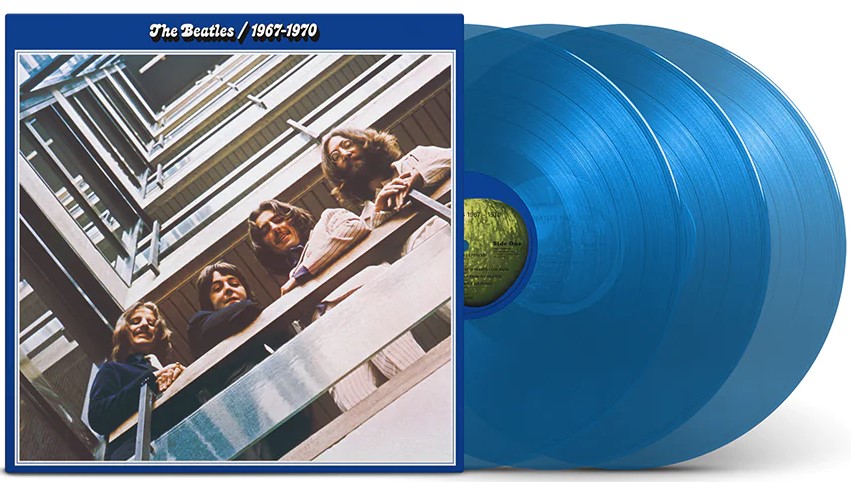 A 50th Anniversay edition of the compilation album "The Beatles / 1967 - 1970" (aka "The Blue Album") was released on November 10th, 2023, the Giles Martin stereo mix of "Ob-La-Di, Ob-La-Da" as detailed above, being included. This expanded release included 12 additional songs for a total of 38 tracks, and was made available as a double CD and as a triple vinyl release on both black and blue vinyl. A 50th Anniversay edition of the compilation album "The Beatles / 1967 - 1970" (aka "The Blue Album") was released on November 10th, 2023, the Giles Martin stereo mix of "Ob-La-Di, Ob-La-Da" as detailed above, being included. This expanded release included 12 additional songs for a total of 38 tracks, and was made available as a double CD and as a triple vinyl release on both black and blue vinyl.
Live Performances
The Beatles were well past their touring career as of late 1968 so no live performance of “Ob-La-Di, Ob-La-Da” by the group ever materialized.
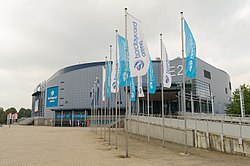 However, Paul did eventually include the song in his live set lists, starting with his “Good Evening Europe Tour,” running from December 2nd (at the 02 World Hamburg Arena in Hamburg, Germany) to December 22nd (London, England) 2009. From there, he featured it on his “Up And Coming” Tour, spanning from March 28th, 2010 (Phoenix) to June 10th, 2011 (Las Vegas). Then came his “On The Run” Tour, running from July 15th, 2011 (New York City) to November 29th, 2012 (Edmonton, Canada). Then came his “Out There” Tour, which began on May 4th, 2013 in Belo Horizonte, Brazil. His "One On One" tour also featured the song, which ran from April 13th, 2016 (Fresno, California) to December 16th, 2017 (Aukland, New Zealand). He continued the use of the song during his "Freshen Up" tour, which started on September 17th, 2018 (Quebec City, Canada) and concluded on July 13th, 2019 (Los Angeles, California), followed by his "Got Back" tour, which ran from April 28th, 2022 (Spokane, Washington) to December 19th, 2024 (London, England). However, Paul did eventually include the song in his live set lists, starting with his “Good Evening Europe Tour,” running from December 2nd (at the 02 World Hamburg Arena in Hamburg, Germany) to December 22nd (London, England) 2009. From there, he featured it on his “Up And Coming” Tour, spanning from March 28th, 2010 (Phoenix) to June 10th, 2011 (Las Vegas). Then came his “On The Run” Tour, running from July 15th, 2011 (New York City) to November 29th, 2012 (Edmonton, Canada). Then came his “Out There” Tour, which began on May 4th, 2013 in Belo Horizonte, Brazil. His "One On One" tour also featured the song, which ran from April 13th, 2016 (Fresno, California) to December 16th, 2017 (Aukland, New Zealand). He continued the use of the song during his "Freshen Up" tour, which started on September 17th, 2018 (Quebec City, Canada) and concluded on July 13th, 2019 (Los Angeles, California), followed by his "Got Back" tour, which ran from April 28th, 2022 (Spokane, Washington) to December 19th, 2024 (London, England).
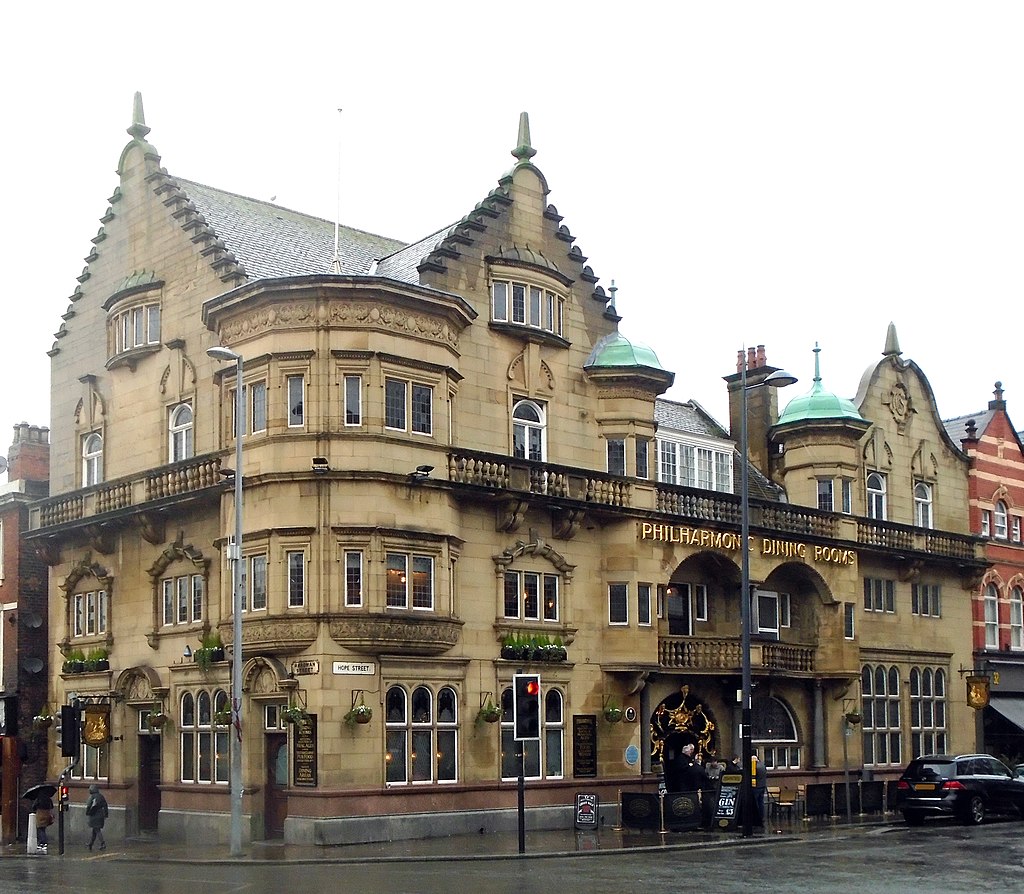 Paul also performed the song at the Philharmonic Pub in Liverpool on June 9th, 2018 for a filmed segment on "The Late Late Show With James Corden." A truncated version of this show first aired on CBS television on June 21st and then as part of a prime-time special on August 20th of that year. Paul also performed the song at the Philharmonic Pub in Liverpool on June 9th, 2018 for a filmed segment on "The Late Late Show With James Corden." A truncated version of this show first aired on CBS television on June 21st and then as part of a prime-time special on August 20th of that year.
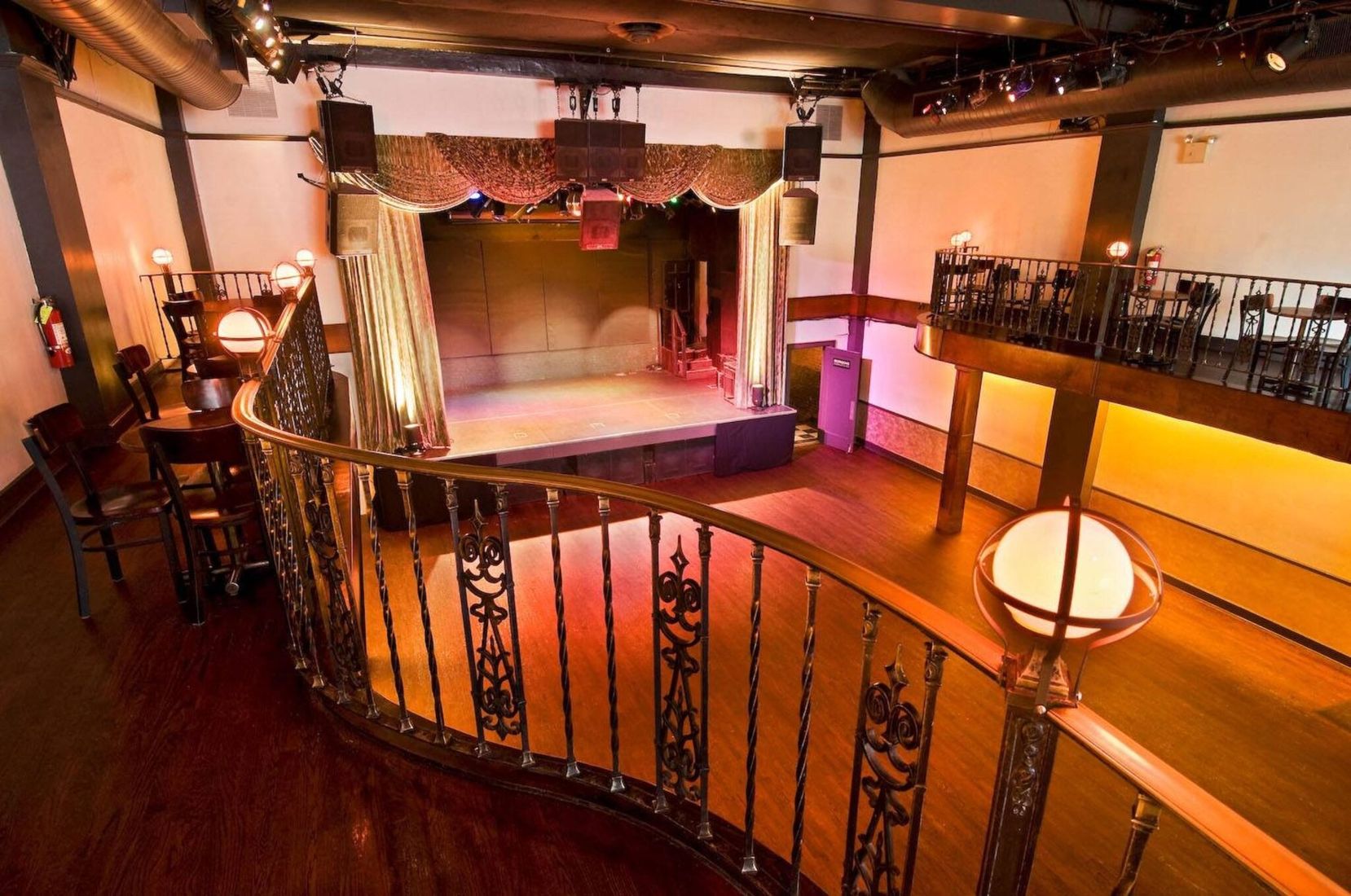 Interestingly, Paul and his group played a surprise three night residency at the Bowery Ballroom in New York City on February 11th, 12th and 14th, 2025, this final night being Valentine's Day. They played "Ob-La-Di, Ob-La-Da" at each of these performances at this quaint 575-capacity venue in Manhattan. Interestingly, Paul and his group played a surprise three night residency at the Bowery Ballroom in New York City on February 11th, 12th and 14th, 2025, this final night being Valentine's Day. They played "Ob-La-Di, Ob-La-Da" at each of these performances at this quaint 575-capacity venue in Manhattan.
Conclusion
The charm of “Ob-La-Di, Ob-La-Da” rests in good measure in its depiction of spontaneity, sounding like The Beatles just cranked the song out very quickly as a group of fun-loving pals around a campfire somewhere. As we've seen above, though, this was anything but the case. In fact, approximately 42 combined hours were utilized in achieving the feel that Paul had in mind, more than any other track on the “White Album.”
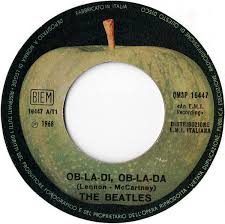 Credit, however, should be given where due. The spontaneous atmosphere they ended up going with, this being a much more “fun” sounding track then the originally recorded version, makes the ultra-lighthearted and frivolous lyric work nicely against the darker and harder imagery heard elsewhere on the album. John's “ho-ho”s, “hee-hee”s and off handed commentary sprinkled in the background may very well have been his kind of frustrated release at recording what he thought of as a trite song, but it actually does wonders for making it an enjoyable listen even today. And the kids loved it! Credit, however, should be given where due. The spontaneous atmosphere they ended up going with, this being a much more “fun” sounding track then the originally recorded version, makes the ultra-lighthearted and frivolous lyric work nicely against the darker and harder imagery heard elsewhere on the album. John's “ho-ho”s, “hee-hee”s and off handed commentary sprinkled in the background may very well have been his kind of frustrated release at recording what he thought of as a trite song, but it actually does wonders for making it an enjoyable listen even today. And the kids loved it!
Song Summary
“Ob-La-Di, Ob-La-Da”
Written by: John Lennon / Paul McCartney
- Song Written: March – May, 1968
- Song Recorded: July 8, 9, 11 & 15, 1968
- First US Release Date: November 25, 1968
- First US Album Release: Apple #SWBO-101 “The Beatles”
- US Single Release: Capitol #4347
- Highest Chart Position: #49
- British Album Release: Apple #PCS 7067-7068 “The Beatles”
- Length: 3:10
- Key: B major
- Producer: George Martin
- Engineers: Geoff Emerick, Richard Lush, Phil McDonald
Instrumentation (most likely):
- Paul McCartney - Lead Vocals, Bass (1964 Rickenbacker 4001 S), Piano (1964 Challen upright 861834), Acoustic Bass (1967 Martin D-28), backing vocals, handclaps
- John Lennon - Piano (1964 Challen upright 861834), backing vocals, handclaps
- George Harrison - Rhythm Guitar (1968 Gibson J-200), backing vocals, handclaps
- Ringo Starr - Drums (1964 Ludwig Super Classic Black Oyster Pearl), maracas, bongos, handclaps
- Rex Morris (?) - saxophone
- Ronnie Scott (?) - saxophone
- unknown - saxophone
Written and compiled by Dave Rybaczewski
|
IF YOU WOULD LIKE TO MAKE A DONATION TO KEEP THIS WEBSITE UP AND RUNNING, PLEASE CLICK BELOW!
Sign Up Below for our MONTHLY BEATLES TRIVIA QUIZ!
|